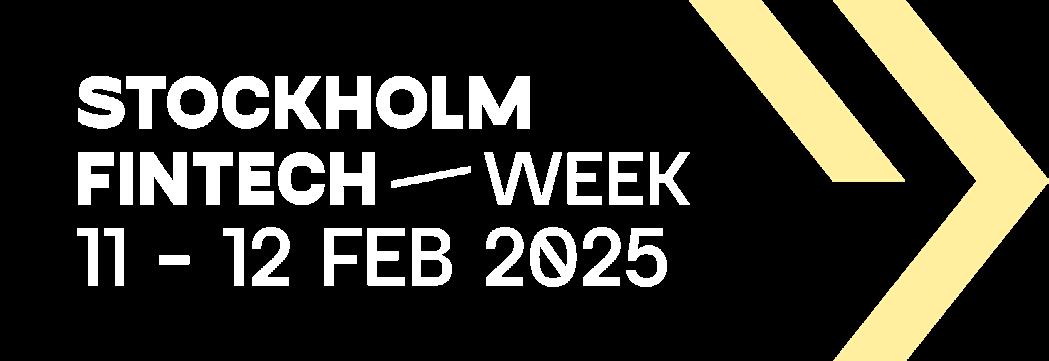




Nordic Fintech Magazine exclusively works together with selected Nordic Community Partners for insights and distribution, giving us unparalleled reach with audiences across the Nordics and Baltics
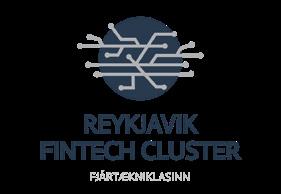






Thank you to all the fintech heroes contributing to this magazine!

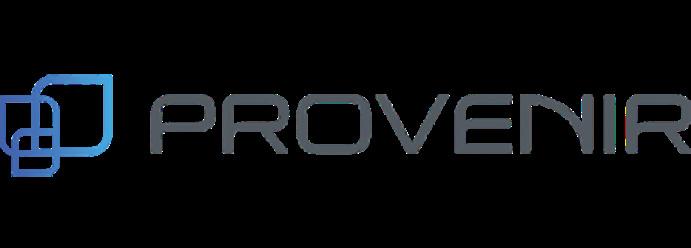









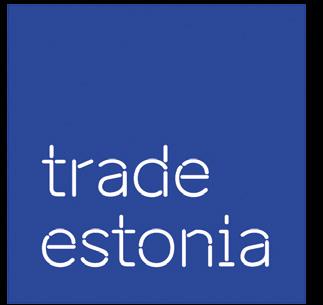









8
Welcome to the Winter Edition of Nordic Fintech Magazine! p. 6 p. 10
Stockholm the Capital of Fintech

12
Fintech on Tour: Europe’s Next Big Act
Fimento’s AI Achieves 97% Accuracy in Credit Onboarding Process Fimento is a financial SaaS solutions provider specialising in credit insights, loans and
€10M EU-Funded LendTech “Mifundo” Reduces Credit Risk by 7X p. 13
14
16
17
18
The Future of Banking is Agentic
Combating Fincrime and Cybercrime in the Age of AI
Maventa Solves 60-year-old E-invoicing Problem
Why your 2025 GTM is FKD
Fraud, Stigma, and Systemic Failure: A Call for Change p. 20
Mambu’s Composable Banking Approach Offers Solution for Nordic Banking Transformations p. 22
23

24
26
25
Mastercard’s Lighthouse Program is a Key Driver of Nordic & Baltic Fintech Innovation
A Core Banking Platform So Revolutionary That You Can Pay for It by the Hourp
Enterprise Estonia: Driving Innovation and Economic Growth
The Wacky World of Quantum and Why This Mind-Bending Concept Could Change Everything
Enterprise Estonia: Driving Innovation and Economic Growth
34
36
37
38
40
42
46
The Growth and Future of Latvia’s Fintech Ecosystem: A New Era of Innovation and Collaboration
Wolfpack Provides the Missing Layer Between Banking and Accounting
Svea Bank’s BaaS Solution: Transforming Financial Services through Integration
Stop Talking Tech-Start Solving Problems Your Customers Care About
Temenos Launches Enterprise Cross-Border Payments Solution
What’s Next in Blockchain

Quantum Computing: A New Era for Financial Services - Defence and Offence
Shift4: One Integration. One API. Instant Access to Global Payments p. 48
50
Ntroducing Hybrid Payments - On The Verge Of Digital Dominance

55
Asia’s Payment Revolution: How the World’s Fastest-Growing Region is Redefining Payments
Crafting the Baltic Fintech Ecosystem: A Modern-Day Baltic Way
56 Are New WealthTech Tools Truly Democratizing Investment?
“From Compliance to Competitive Edge: Why Europe’s Fintech Future Lies in Purpose, Humanity, and Trust”
58
Fintechs and academics of the world, unite: How collaborating with a fintech scholar can turbocharge your startup
As we step into 2025, the Nordic and Baltic fintech landscapes continue to push the boundaries of the industry with exciting develompents that are setting the tone for 2025.
By Chris Crespo

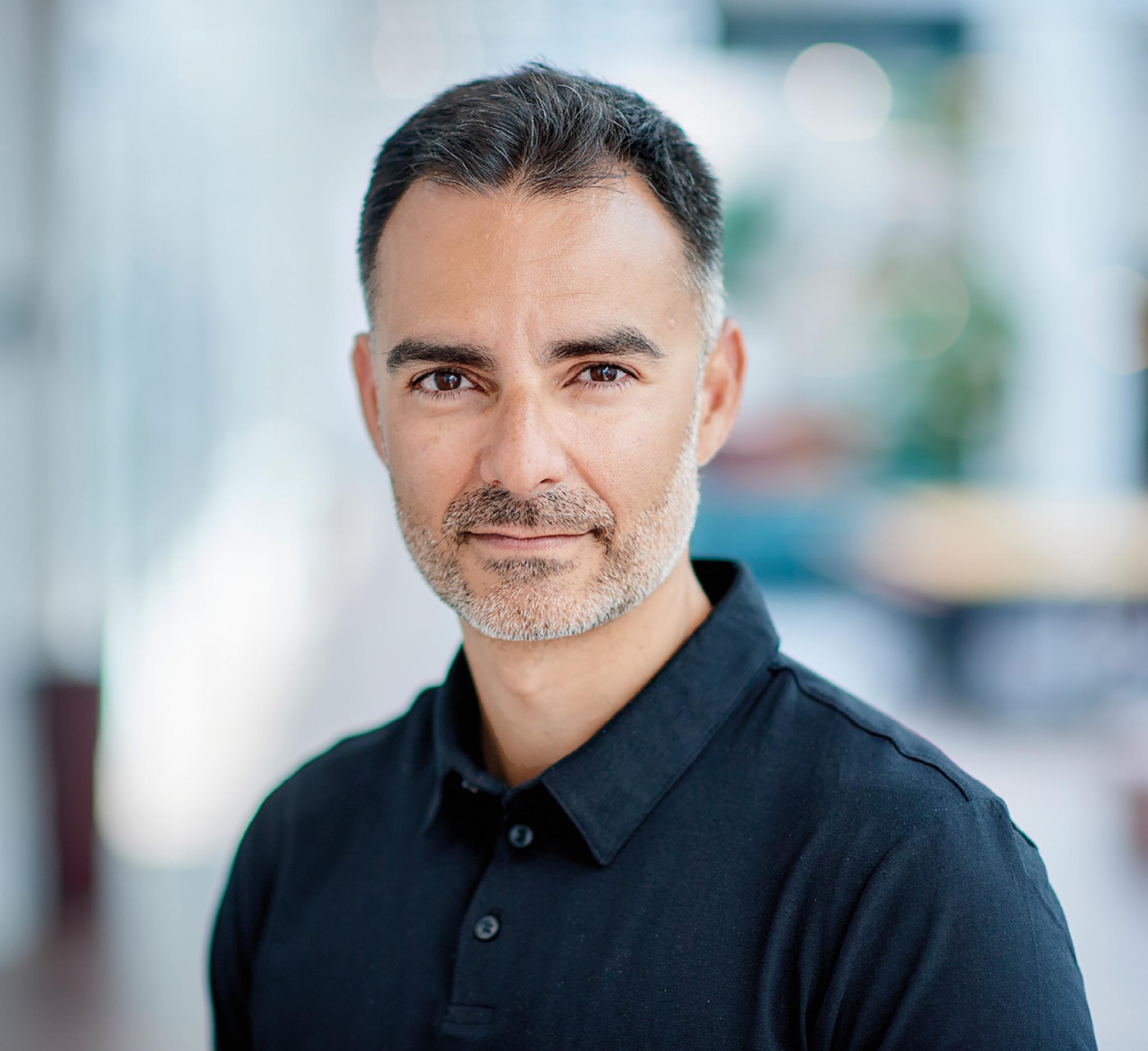
The industry has matured, becoming a steady source of job creation and investment.
Gone are the days of unmeasured growth; today, we see a stable yet promising phase in the fintech sector. To borrow from Gartner‘s Hype Cycle, Fintech has entered the proverbial “plateau of productivity”. Originally coined to describe the phase where technology matures, proves its value, and gains widespread adoption, in this context, we use it to signify the coming of age of an industry that initially went through a period of unfocused overreach, marked by a “winner-takes-all” mindset. Over time, however, it has shifted from disruption to refinement. In this more recent stage of maturity, fintechs are expanding both within their
home markets and internationally. They are building strong collaborations with other ecosystem players and, in some cases, preparing for IPOs. Klarna is a prime example, highlighting the region’s growing influence in global fintech.
Sweden and specifically Stockholm continues to be the beating heart of Nordic fintech accounting for 42% of the Nordic Fintech Ecosystem. The Swedish market also continues attract the hightest levels of investment. Notably, seven out of the top ten funded fintech firms in 2023 were based in Sweden. There are far too many innovative fintech companies in Sweden to name them all, but a few that stand out include Atlar, simplifying bank-to-bank payments for businesses; Lovable, enabling software development through a chat inter-
face; Anyfin, which helps consumers refinance loans and reduce borrowing costs, and Minna Technologies, which provides subscription management tools for banks and businesses.
But tha’s not all. Finland is setting a precedent in crypto regulations, focusing on fraud prevention and consumer trust, setting the stage for the MiCA regulations which as of the 30th of December has gone into full force. Meanwhile, Norway’s green fintech sector is merging sustainability with finance, supporting platforms that track carbon credits and promote sustainable investments.
Denmark’s fintechs like Lunar and Pleo are continuing their international expansion, capitalizing on Denmark’s reputation for user-friendly financial solutions.
The Baltic fintech ecosystem is flourishing. With it’s highest density of unicorns per capita in the world, the region is attracting record venture capital investments, particularly in payments and compliance. For the first time, the region will have its own dedicated fintech event in 2025, Baltic Fintech Days. The event will highlight the region’s exceptional fintech talent and position it as Europe’s next major fintech hub.
Blockchain is quietly making a comeback with real-world applications that promise to transform financial services. Wealthtech is democratizing investment markets, enabling average people to invest. Compliance is becoming a competitive edge, and fintechs are leveraging academic expertise for growth.
In Lithuania, the fintech ecosystem is booming, making it a magnet for investment and talent. The country’s strategic focus on regulatory clarity and innovation has positioned it as a leading hub in Europe. Additionally, compliance is increasingly being seen as a competitive advantage. Fintechs are not only meeting regulatory demands but turning them into opportunities for differentiation and growth.
Working with academic institutions is emerging as a key strategy for many fintechs. Collaborating with academics provides fintech companies with deep insights and cutting-edge research, enhancing their strategic direction and innovation potential. This untapped resource is proving a secret weapon for fintechs wishing to drive growth and excellence.
We’re thrilled to share these insights and trends with you. Our contributors, including thought leaders and influential voices in fintech, bring you a diverse range of topics from quantum finance to the impact of romance scams.
We hope you find this edition inspiring and opinion shiftig as we take a cold and refreshing plunge into the world of the riveting world of fintech. Enjoy and stay disruptive!
AboutChris Crespo is a corporate storyteller and Head of Content at Nordic Fintech Magazine, where he oversees the creation of narratives that connect industry leaders and celebrate innovation in the Nordics and Baltics.
2025: The Nordics have cemented their position as a global hotspot for financial innovation, with Stockholm emerging as the region’s de facto capital. As the meeting point for Nordic collaboration and business, Stockholm boasts a thriving ecosystem of startups, a supportive community, and a culture deeply rooted in problem-solving. Let’s explore the hard numbers, unique mindset, and vibrant community that make Stockholm the cornerstone of the Nordic fintech ecosystem.
By Love Dager, Lana Brandorne, Anna Claassen
Stockholm’s fintech sector exemplifies growth and innovation. The city hosts over 500 fintech startups, making it one of the densest fintech hubs in Europe. In 2022 alone, Stockholm’s fintechs attracted more than €1.2 billion in venture capital investment, underscoring its appeal to global investors. While global fintech investment experienced a significant decline in recent years, Stockholm remained resilient. In 2024, the city is estimated to have attracted approximately €500-600 million in venture capital investment, reflecting both its continued strength as a fintech hub and the broader economic challenges impacting investment levels worldwide.
Stockholm is also renowned for producing fintech unicorns, including Klarna, Bambora (Ingenico 2015, merged with Worldline 2020), iZettle (acquired by PayPal 2018), and Trustly, positioning
it among Europe’s leading cities for billion-dollar fintech companies. Moreover, the fintech sector has contributed significantly to job creation, employing over 20,000 professionals in the Stockholm region, bolstering both the economy and a skilled workforce.
The Mindset: Solving Challenges Through Entrepreneurship
Sweden’s entrepreneurial mindset is deeply rooted in a unique blend of cultural openness, technological sophistication, and supportive infrastructure. The nation’s start-up ecosystem benefits from readily available funding, robust investor networks, and well-established mentorship channels. Historically, Sweden’s emphasis on universal access to quality education and near-total internet connectivity— about 99% of citizens are online—has cultivated a highly literate, tech-savvy population primed for innovation.
However, while other Nordic countries also boast high levels of connectivity and education, Stockholm distinguishes itself as the financial capital of the Nordics, home to the region’s largest banking and financial sector.
A significant factor in Stockholm’s success is the role of its early fintech successes, which have not only inspired a new generation of entrepreneurs but also significantly contributed to the availability of VC and angel funding. This increased access to capital provides fertile ground for startups to scale and thrive.
At the cultural level, openness is a defining characteristic, encouraging transparency, collaboration, and the free exchange of ideas. Swedish consumers, known as early adopters of digital services, actively nurture entrepreneurial spirit by embracing new technologies. Their acceptance of e-government services, used by over 95% of the
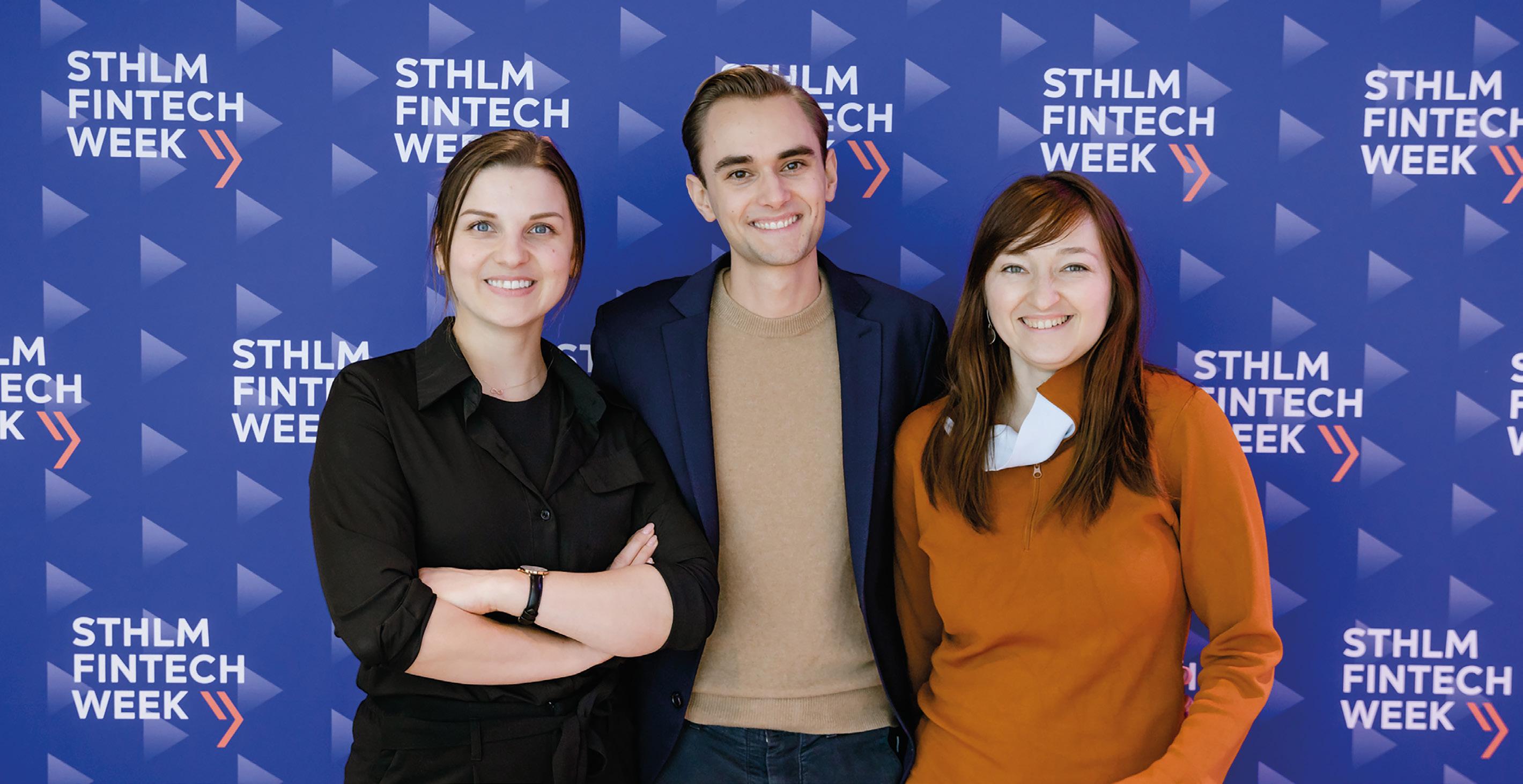
Lana Brandorne, Love Dager and Anna Claassen. Co-Founders of Stockholm Fintech.
to support innovators who drive economic growth and societal progress.
A Thriving Community
If you too want to be a part of the thriving fintech community that Stockholm is, we warmly welcome you to our home at Stockholm Fintech Week 11-12 February 2025. Read more at stockholmfintech week.com.
Anna Claassen, Lana Brandorne and Love Dager Co-Founders of Stockholm Fintech
population, further reflects a national willingness to embrace change.
Sweden’s normalization of risk-taking and its cultural emphasis on innovation have solidified its reputation as a global leader in fostering entrepreneurial problem-solving. This environment continues
Stockholm’s fintech success is not just about numbers—it’s also about the people and the ecosystem they’ve cultivated. The city boasts a vibrant, collaborative network of startups, investors, regulators, and accelerators. Programs such as Sting provide fintech startups with mentorship, funding, and resources to scale rapidly.
Events like Stockholm Fintech Week underline the city’s strong sense of community. This annual gathering brings together over 1,500 attendees, including startups, investors, regulators, and global partners. Stockholm Fintech, a central player in the ecosystem, facilitates year-round events, startup-investor pitch sessions, and international collaborations that amplify the city’s profile as a fintech hub.
The Way Forward
Stockholm’s rise as a fintech capital is no accident. It reflects a deliberate effort to cultivate a supportive ecosys-
tem, driven by innovation and trust. As finance continues to evolve, Stockholm not only keeps pace but sets the standard for what a fintech hub can achieve.
From its robust infrastructure and entrepreneurial mindset to its collaborative community, Stockholm offers a unique blend of opportunity, talent, and inspiration.
Stockholm isn’t just the capital of Sweden—it’s the capital of fintech innovation, shaping the future of finance in Europe and beyond.
Anna Claassen, Lana Brandorne and Love Dager are the co-founders of Stockholm Fintech, the fintech community of Stockholm and Sweden. Each year they organize multiple events, international delegations and investor activities for the Nordic finance and tech sector – all culminating in the Stockholm Fintech Week that each year gathers everyone in one place.
The fintech industry stands at the forefront of a global financial revolution, reshaping traditional banking and payments ecosystems. With rapid advancements in digital technologies and increasing consumer demand for faster, more efficient financial solutions, the sector has become a battleground for innovation.
By Lukas Savickas, Minister of Economy and Innovations of Lithuania
As the U.S. and China dominate the landscape with their tech giants and extensive markets, Europe faces the challenge of carving out its place amidst these global powerhouses.
Europe: A Contender in the Global Fintech Arena
In recent years, Europe has taken significant strides to assert itself in the fintech domain. The European Union has introduced robust regulatory frameworks, such as the PSD2 directive, fostering innovation and competition while ensuring consumer protection. Countries like the UK, Germany, and the Netherlands have long been considered fintech leaders in the region. Yet, the EU’s fragmented financial systems and diverse regulations remain hurdles to creating a unified fintech ecosystem. Despite these challenges, Europe’s focus on sustainable and inclusive growth offers a unique competitive edge. Initiatives supporting green finance, insurtech, and regtech are reshaping the continent’s fintech narrative. However, staying ahead in the race demands continuous innovation, cross-border collaboration, and the ability to attract global talent and investment.
Lithuania: A Gateway to European Fintech
Amidst Europe’s fintech surge, Lithuania has emerged as a formidable player and a gateway for international fintech companies entering the EU. With over 276 fintechs operating locally, the country’s regulatory environment, talent pool, and strategic vision have set it apart as a hub of innovation and opportunity. The sector employs over 7,400 professionals (Invest Lithuania, 2023). These achievements have positioned Lithuania 10th in the Global Fintech Ranking (Findexable, 2021) and as the largest fintech hub in the EU in terms of licensed companies (EUCLID Register, European Banking Authority, 2022). Additionally, Lithuania is recognized as a low-risk jurisdiction, ranking 9th globally, and it claimed 3rd place in the competition to host the EU’s new Anti-Money Laundering Authority (Basel AML Index, 2023).
Lithuania’s achievements are a testament to its ambitious approach. Its regulatory authority, the Bank of Lithuania, is renowned for its progressive initiatives, including the Regulatory Sandbox and the Newcomer Program, which enable companies to test and scale their solutions within a safe and supportive framework.

Cost-Efficiency and Talent: Lithuania offers a highly competitive cost-to-quality ratio. Ranked first globally for digital and technological skills availability, it ensures that fintech firms can access topnotch expertise at competitive costs. Moreover, 43% of fintech leadership roles in Lithuania are held by women, showcasing inclusivity.
• Strategic Location and Accessibility: Positioned as a gateway to the European Economic Area (EEA), Lithuania simplifies market entry for non-EU companies. Global names like Revolut and DriveWealth have chosen Lithuania as their base for EU operations.
Diverse Ecosystem: While payments remain a dominant sub-sector, Lithuania has expanded its fintech portfolio
Lukas Savickas Minister of Economy and Innovations of Lithuania

Regions like the Baltics and Nordics hold immense potential to drive this transformation further.
Lukas Savickas
Minister
of Economy and Innovations of Lithuania
Lithuania’s 2023–2028 Fintech Strategy underscores its commitment to becoming a global leader in financial technology. The strategy focuses on qualitative and quantitative growth, emphasizing the diversification of the fintech ecosystem. Initiatives like the LBChain blockchain platform and AI-driven fraud prevention systems highlight Lithuania’s drive for technological excellence.
to include wealthtech, crowdfunding, insurtech, and regtech. These areas are primed for growth, with initiatives like enhanced financial literacy campaigns and supportive licensing environments leading the way.
Ebis et modis etur? Quia ipiet volupti uribus dolupta nienimo llaborrore expelit ecepresecum velignihil is doloreped maxim illupta tianihitiis nitione stotasperion prore nonse explandam solorem et iniendi gnatem idest reicaboribus is eicae. Que conse nat harchil luptis excestias voloreptatet re aut quam ipienis eum recae dolutem eaqui cuptatem venis eumenist, nite lab inum as
Strengthening Europe’s Global Position Collaboration across borders is key to Europe’s strategy, as seen in its efforts to unify fragmented financial systems and streamline market access. This approach not only reduces barriers for fintech companies but also strengthens the continent’s collective capacity to innovate and attract investment.
The success of leading fintech hubs in the UK, Germany, the Netherlands, Lithuania, and emerging players demonstrates Europe’s potential to be a global contender. By harnessing its diverse markets, strategic initiatives, and skilled workforce, Europe is creating an ecosystem that thrives on technological excellence and inclusivity. In a globalized world, Europe’s ability to compete with dominant markets hinges on continuous innovation, unified policy-making, and the attraction of global talent. With a clear vision and strategic collaboration, Europe is poised to strengthen its position as a
global fintech powerhouse, contributing to a more dynamic and balanced financial landscape.
Moreover, regions like the Baltics and Nordics hold immense potential to drive this transformation further. With their high levels of digital literacy, advanced infrastructure, and entrepreneurial ecosystems, the Baltic and Nordic countries are uniquely positioned to serve as catalysts for innovation. These regions are not only pioneering solutions in payments and blockchain but are also leading the way in sustainable and inclusive fintech development. Their compact size and agility allow them to quickly adopt and implement forward-thinking policies, making them ideal testing grounds for new financial technologies.
So I urge Europe to become a cross-border playground, unifying systems and regulations to foster seamless collaboration and innovation.
Fimento is a financial SaaS solutions provider specialising in credit insights, loans and factoring, and AI technology. The company forms part of Moank Fintech Group, which includes Moank Bank, an early adopter of PSD2.
By R. Paulo Delgado
M’oank began as a consumer lending business. By 2018, Moank recognised that its technology was mature enough to offer to others. The company split into two, giving rise to Fimento, which is the tech arm of Moank Fintech Group. Moank went on to receive a banking license in 2022, while Fimento continued to build out its tech offerings.
In 2023, the company established a significant joint venture with UC—Sweden’s credit reference agency—to provide PSD2 and credit insight services across Sweden and Finland. The company has since expanded its operations to Spain and the Netherlands.
Credit assessment services
Fimento provides banks and financial institutions with AI-powered analysis of customer bank account data to verify income, analyse spending patterns, and detect potential fraud.
“Our income and expenditure AI has reached accuracy levels of up to 97% in categorisation tasks. We use this categorisation during a customer onboarding process to improve the quality of credit checks,” says Torbjörn Sandahl, CEO of Moank Fintech Group.
Fimento offers real-time bank account analysis for credit assessment, including

Torbjörn
Sandahl CEO of Moank Fintech Group
Fimento is open for business in the fields of credit onboarding, factoring, and PSD2 and PSD3 requirements.
Torbjörn Sandahl
CEO
of Moank Fintech Group
a 90-day monitoring option to determine risk. The platform can cross-check company financials against their submitted annual statements to verify accuracy and detect potential discrepancies.
With the customer’s consent, Fimento’s tech can also listen for anomalies such as excessive loans or other suspicious account behaviour to determine risk with a high degree of accuracy.
“We’re constantly improving our AI categorisation so that the credit process can become faster, reducing the need for someone to sit at a desk crunching numbers in an Excel spreadsheet,” says Sandahl.
“Hyperfinance”—groundbreaking factoring technology
Fimento offers a factoring service called Hyperfinance that operates fundamentally differently from traditional bank lending. Instead of going through the immense paperwork of obtaining a fixed credit line—which grows more complex when the company wants to increase that credit line later—Fimento offers a
pay-per-use option.
“Companies simply state how much they think they need and then run as fast as they can,” says Sandahl.
No additional fees are associated with having the credit line.
The service is currently up and running with a factoring company in Sweden.
In all cases, Moank Bank provides the financing while Fimento provides the tech behind it.
Fimento will flex its muscles at Stockholm Fintech Week by demonstrating two live AI-powered systems. The first, called Moa, is a chatbot that answers questions about the Digital Operational
Resilience Act (DORA).
DORA went into force in 2023 and into application on 17 January 2025. Its purpose is to strengthen the IT security of financial institutions.
It’s also 600 pages long with 1,100 lines of requirements, and Moa’s task will be to demonstrate AI’s ability to provide simple, accurate answers based on complex underlying data.
The other AI demo is more personal. Visitors will be able to drop their ID into it and Fimento’s AI will categorise their spending and income for them after they provide consent.
“Fimento is open for business in the fields of credit onboarding, factoring, and PSD2 and PSD3 requirements,” says Sandahl.

Credit data is fragmented across Europe, making it virtually impossible for expats, cross-border commuters, and people wanting a vacation home abroad to access debt. Mifundo, a LendTech based in Estonia, has solved this problem by building a product that consolidates credit and open banking data for banks to access.
By R. Paulo Delgado
Mifundo has already made history by being the first fintech to receive funding from the European Innovation Council (EIC). The company received €10 million from a fund slated for companies of strategic importance to Europe, and with global disruptive potential.
NFM caught up with Kaido Saar, CEO and Founder of Mifundo, to understand more about the fintech:
NFM: How does Mifundo work?
Kaido Saar: Mifundo aggregates and standardizes credit bureau data and open banking information from multiple European countries, delivering it through a single API to banks. This allows banks to access the same level of customer financial information that local banks would have in other countries.
Mifundo’s unique value proposition is our ability to connect cross-border financial histories across EU countries, enabling individuals to access financial services without the barriers created by local credit histories.
It sounds simple, but it’s immensely complex to achieve this, especially in Europe where accessing financial data across borders is both highly regulated and highly complex due to multiple data sources, languages, currencies, and technologies.
How did you overcome the data-sharing challenge?
No data is shared without full customer consent, and we maintain a
record of that consent for compliance purposes. When a bank wants to query a customer’s financial profile, they trigger the request through Mifundo’s platform or API.
How has the response been from the banking sector?
Banks are extremely receptive to the service because they’re shackled without data, and obtaining this data without a service such as Mifundo’s is complex, to say the least.
Given enough accurate data, a bank can explore loan opportunities they otherwise wouldn’t, Most banks don’t know that 15% of loan applications in Europe come from foreigners, likely more for digital banks.
Our product is particularly valuable for banks dealing with foreign customers, as building individual connections with multiple credit bureaus across countries would be impractical and costly for small percentages of their customer base.
Europe doesn’t have uniform credit scoring practices, so we standardize the data, regardless of the source language or currency.
We take care of all the technological and compliance complexities so the bank can focus on the underwriting process.
Tell us about any success stories from using your product.

foreign customer creditworthiness, thus significantly reducing the credit risk associated with those loans.
This allows banks to access the same level of customer financial information that local banks would have in other countries.
Kaido Saar CEO and Founder of Mifundo
One of our clients, a bank in Southern Europe, faced significant challenges with nationals living in Northern Europe, the Nordics, and the UK, who wished to return home and purchase real estate.
The bank lacked proper data on these potential customers, making it difficult to assess their creditworthiness.
By integrating Mifundo’s platform, the bank could instantly determine
Another case was a bank with a BNPL scheme designed to serve international retailers. Mifundo helped increase the conversion rate for retailers.
Every bank is different, and Mifundo accommodates their needs.
What is Mifundo’s immediate goal for 2025?
In the coming year, our top priorities include expanding our network of integrated credit bureaus, securing more bank partnerships, and further refining our platform to support advanced features and AI capabilities.
Behind that desire to expand is our underlying purpose—to empower individuals across Europe with the freedom to move and be trusted, ensuring that their creditworthiness travels with them, no matter where they choose to live.
We are in the midst of the next banking technology revolution. Few visionary banks have started to lay the groundwork for this revolution by adopting MACH architecture (microservices, API-first, Cloud-native and Headless). MACH is key to making banks composable rather than the rigid silos they have today. This in itself is a transformation journey not just a project. However, beyond MACH, the next stage of that journey is already upon us and it is called “Agentic Banking”. This is not about chatbots and using generative AI, it is a fundamental shift towards making the bank much more dynamic and responsive to change right down to an individual customer level!
By Dharmesh Mistry
The transformation to MACH architecture has already demonstrated significant benefits for early adopters, including increased agility, faster time-to-market for new features, and improved scalability. These advantages create the perfect foundation for the next evolutionary step: agentic banking platforms that can truly transform the financial services landscape.
Old Habits
Some banks pride themselves on implementing cutting-edge generative AI solutions, but these often amount to sophisticated point solutions: a GPT model for customer service here, an AI-driven risk assessment tool there. This is the same fragmented approach that has got them to have a disjointed patchwork of disparate systems based on different genres of technology. Whilst it’s good to understand this new technology with a single implementation, letting departments exploit it independently is a mistake. Once banks
understand the full transformative potential of truly integrated AI systems a plan for a more strategic and holistic approach can be created.
This fragmented approach creates several challenges: duplicate data storage, inconsistent customer experiences, increased operational costs, and missed opportunities for cross-functional insights. Moreover, maintaining multiple AI systems across different departments leads to higher technical debt and complexity in system integration. Banks must break free from these traditional patterns to remain competitive in an increasingly digital financial landscape.
Technically in very simplistic terms it is about embedding AI across all the systems in the bank. It is about replacing workflows and business rules/logic with dynamic decisions backed by data. Agentic banking will transcend siloed systems by leveraging API’s to interact directly with source systems rather than having to copy data or

have it manually rekeyed by humans.
Recently in an interview Microsoft CEO Satya Nadella goes further to say that “AI agents are poised to render traditional SaaS applications obsolete”.
The technical architecture required for agentic banking consists of several crucial layers:
1. Data Foundation Layer: A unified data platform that enables real-time access and processing of all banking data, from customer interactions to market information.
2. AI Agent Layer: Specialized agents designed for specific banking functions, each with its own expertise and decision-making capabilities.
3. Orchestration Layer: Sophisticated systems managing agent interactions, ensuring coordinated actions and maintaining operational integrity.
4. Security and Compliance Layer: Embedded controls ensuring all agent actions adhere to


regulatory requirements and security protocols.
Imagine a unified banking platform where intelligent agents collaborate seamlessly:
A risk assessment agent identifies market opportunities and potential threats in real-time Trading agents automatically evaluate and execute opportunities within compliance boundaries
• Portfolio management agents dynamically adjust client positions based on market conditions
Customer communication agents proactively engage clients with personalized insights and recommendations
• Fraud detection agents continuously monitor transactions and adapt to new threat patterns
• Regulatory compliance agents ensure all operations meet current legislative requirements

AI agents are poised to render traditional SaaS applications obsolete.
Satya Nadella CEO at Microsoft
Product recommendation agents create personalized financial solutions based on individual customer needs and behaviour
This orchestrated intelligence operates at scale, transforming how banks serve their customers and manage risk. The platform requires sophisticated orchestration layers managing agent interactions while maintaining strict security protocols and regulatory compliance by design.
In my previous article, “A day in the life of Frank”, I presented a story of a banking customer of the future. In this story much of the characters life was being orchestrated by his bank. This really was just one example of how agentic banking could fundamentally change the role of a bank by allowing it to be more deeply embedded into customer lives.
The potential applications of agentic banking extend far beyond traditional banking services. Consider these scenarios:
• Predictive financial planning that adapts in real-time to life events
About
Dharmesh has 35 years experience in banking technology and innovation. He has both worked inside banks driving vision and innovation as well as outside as a serial entrepreneur, investor and writer.
• Automated investment strategies that respond in real-time to market changes and personal circumstances
• Proactive risk management that anticipates and mitigates potential financial challenges
• Seamless integration with other aspects of customers’ digital lives, from shopping, travel, work or healthcare planning
The transition to agentic banking presents several significant challenges that banks must address:
1. Technical Infrastructure: Building and maintaining the required sophisticated infrastructure while ensuring system reliability and performance.
2. Data Quality and Integration: Ensuring data accuracy and accessibility across all systems while maintaining privacy and security.
3. Regulatory Compliance: Navigating complex regulatory requirements while implementing autonomous AI systems.
4. Change Management: Training staff and adapting organizational structures to work effectively with AI agents.
By now many of you will question whether this is possible, and some will question whether their bank wants this. However, I would ask banks to consider if their competitor(s) decide to move in this direction, what will the fate of banks that don’t move towards agentic banking? Those who embrace this transformation early will gain a significant competitive advantage, as agentic platforms represent more than a technological upgrade - they represent a fundamental reimagining of banking operations for the digital age.
The transition to agentic banking is not just an option but a necessity for financial institutions aiming to remain relevant in an increasingly automated and personalized financial services landscape. The question is no longer whether to make this transition, but how quickly and effectively banks can implement this transformative technology while maintaining the trust and security their customers expect.
The Bank for International Settlements (BIS) Innovation Hub brings central banks together from all over the world to experiment and develop financial technology for central banks, and also to share information and provide education. One key topic of discussion for the last three years has been AI and how this technology changes the landscape from a fincrime perspective.
By R. Paulo Delgado
We caught up with Beju Shah, Head of the Nordic Center at Bank for International Settlements Innovation Hub, for his insights.
NFM: How is technology changing the financial crime landscape?
Shah: Cybercriminals are using cutting-edge technologies faster than regulators or the private sector can keep up with. It’s easier than ever for cybercriminals to adopt technology-enabled services like Money Laundering as a Service and Cybercrime as a Service. Technology and AI are reducing the barrier to entry, allowing bad actors to test multiple options and variations of attack vectors rapidly, and criminals are using AI at scale to automate attacks with increased sophistication.
What are the main challenges in combating these new types of attacks?
Shah: Ultimately, money laundering is an international problem. It’s a borderless payments problem. Tackling the problem successfully requires information sharing and collaborative approaches to analysis

information sharing and collaborative approaches to analysis are ultimately needed.
What have we learned about effective detection?
Shah: At the BIS Nordic Centre, we ran a highly successful proof of concept called Project Aurora, which used AI, ML, privacy-enhancing technologies, and advanced analytics that demonstrated that, by applying these to analysis, the broadest possible view of data could achieve a three-fold increase in detection of money laundering but also a reduction in false positives of up to 80%. We’ve now moved into the second phase of the project.
Are banks using AI and ML to try and combat sophisticated attacks?
Shah: Although unsupervised machine learning, particularly graph neural networks, seems to be the most effective of all the technologies tested so far, a lot of questions surround it, particularly regarding explainability. About 25% of banks are using or trying it and have found it promising. Over 50% are using or trying network analysis, graph analytics, and anomaly detection.
What progress is being made on cross-border data sharing?
Shah: Europe’s incoming Anti-Money Laundering Regulations have provisions for better data sharing in Article 75. The regulation doesn’t solve everything but it’s a stride in the right direction. Technologies like federated learning could help but there’s a lot more non-technology work that needs to be done to move progress forward. At the very least, starting nationally is a major step forward.
How is BIS Innovation Hub helping?
Shah: BIS Innovation Hub’s purpose is to educate, show the art of the possible with the latest technologies, and move conversations forward. Several projects across our global centres are looking at various aspects of this problem.
across institutions and ultimately across borders.
It’s not currently possible for banks to rapidly track and adapt to evolving and complex typologies—the patterns used by money launderers—across borders because of variances in data protection regulations which, while
necessary, prevent banks from sharing data easily.
In a survey we did of about 100 major financial institutions and FinTechs, 72% agreed that a holistic network view of transactions and flows is essential to effectively combat money laundering and fincrime, and 82% agreed that
We must be mindful that no silver bullet exists. The threat actors are sophisticated and some have immense resources.
Leveraging tech and data in new ways to improve the visibility of suspicious networks and increase the criminals’ risk could make it harder for them to profit from such activities, especially by slowing them down sufficiently.
E-invoicing will become mandatory for businesses in Europe in 2030, and as early as 2026 in Belgium.
By R. Paulo Delgado
Many small businesses read “e-invoice” and think of the PDF sent over email. That isn’t an e-invoice.
An e-invoice is a machine-readable invoice format that allows for automated payments.
Believe it or not, the technology has existed since 1965. The first e-invoice ever sent was a shipping manifest sent by telex that same year using a format called EDI (electronic data interchange). We’re still using EDI today to send e-invoices, in addition to other formats.
E-invoices can travel on a variety of networks. The most popular of these networks is PEPPOL, but there are closed operator networks as well.
The EU’s regulation to mandate e-invoicing for all businesses flies into the teeth of multiple systems, standards, networks, and legacy formats. However, Europe can look to the Nordics for guidance, which has been using e-invoicing for over 20 years, especially in Norway, Finland, and Sweden. Also in Finland and the Nordics, a

Heikki Malkamäki
Managing Director at Maventa
company called Maventa provides connections to e-invoicing transmission layers. Maventa’s technology is already integrated into popular ERPs and many people might be using Maventa under the hood without knowing it.
Legacy co-existing with new tech
Despite e-invoicing technology’s 60year history, it is deeply integrated into large corporation payment systems. Getting rid of EDI simply isn’t an option— at least not for now.
Europe has issued the EN 16931 standard as part of its regulatory clampdown but adoption is unlikely to happen quickly for companies using legacy systems.
Individual countries also have proprietary standards for their e-in-
voices. For example, Finland uses the Finvoice 3.0 and TEAPPSXML 3.0 formats, Sweden uses Svefaktura, and Germany uses XRechnung and ZUGFeRD.
“Maventa provides format conversions for all relevant formats, and we’re introducing more as we go,” says Heikki Malkamäki, Managing Director at Maventa. “The regulation doesn’t particularly care what format is used, so long as it’s compliant with the EU invoicing standard.”
Benefits of e-invoicing
The use of e-invoicing can significantly speed up payments.
Lost or forgotten invoices become a thing of the past because invoices are integrated into the ERP directly and arrive almost instantly.
“Many businesses cite poor information flow as the main reason for late customer payments. E-invoicing solves that,” says Malkamäki.
E-invoicing can also reduce fraud.One of Maventa’s value-add services is fraud
detection: It uses AI to analyze incoming and outgoing invoices to find erroneous or potentially fraudulent invoices.
BEC (business email compromise) is a serious threat to businesses of all sizes. It refers to a technique where threat actors send fraudulent invoices over email to the accounts department and demand payment. BEC attacks have been successful against massive companies, including Google and Facebook who paid more than $100 million to fraudsters who used this technique. A Toyota subsidiary lost $37 million in 2019 after a BEC attack.
E-invoicing adds a layer into the invoice lifecycle that makes such attacks far more challenging to execute successfully.
E-invoicing helps companies more easily remain compliant with VAT payments, especially as Europe begins implementing its ViDA (VAT in Digital Age) framework to combat VAT fraud, which introduces new RFI requirements for ERP providers.
Maventa’s 2025 goals
Looking ahead, Maventa is monitoring the rollout of e-invoicing mandates across Europe, evaluating which markets they can effectively serve. To do this, the company has its eyes open for partnerships that create mutual benefits and synergies.
Maventa has 15 years of experience in this market—a major advantage over newcomers. “There’s plenty of learning that occurs in 15 years. Our product is high quality and has an extremely high success rate,” says Malkamäki.
By Ewan Macleod
Your Go To Market (“GTM”) strategy isn’t working. It’s time to reset for 2025. That’s because you’ve underpinned that strategy with lead generation that requires constant spamming of hundreds of emails and LinkedIn messages every single day.
For many bank executives I know, this epidemic of ‘lead generation spam’ is making the LinkedIn messaging feature almost unusable. Work mailboxes are already clogged with spam.
Every day, thousands of automated messages are being thrown into bank executive inboxes from desperate, misguided Fintechs.
If the definition of madness is repeating the same task continually, hoping for
different outcomes, then it’s safe to say that most of the bank-serving Fintech ecosystem descended into madness long ago.
Yet, the nonsense continues. And now, in 2025, it’s AI-enabled. Oh dear.
Yes, all of those spammy LinkedIn and email messages are now pumped through ChatGPT to generate a constant barrage of automated “personalised” outreach messages. This, as far as the Marketing teams are concerned, rep-

resents the pinnacle of lead generation automation. It works very well in some industries, but it’s entirely the wrong focus for any Fintech aiming to sell services to banks.
Spare a thought, dear reader, for the Sales and Business Development teams at these Fintechs (I’ll call them “Biz Dev” ongoing).
Spare a thought for them because they know what needs to be done. They know it’s about relationships. They
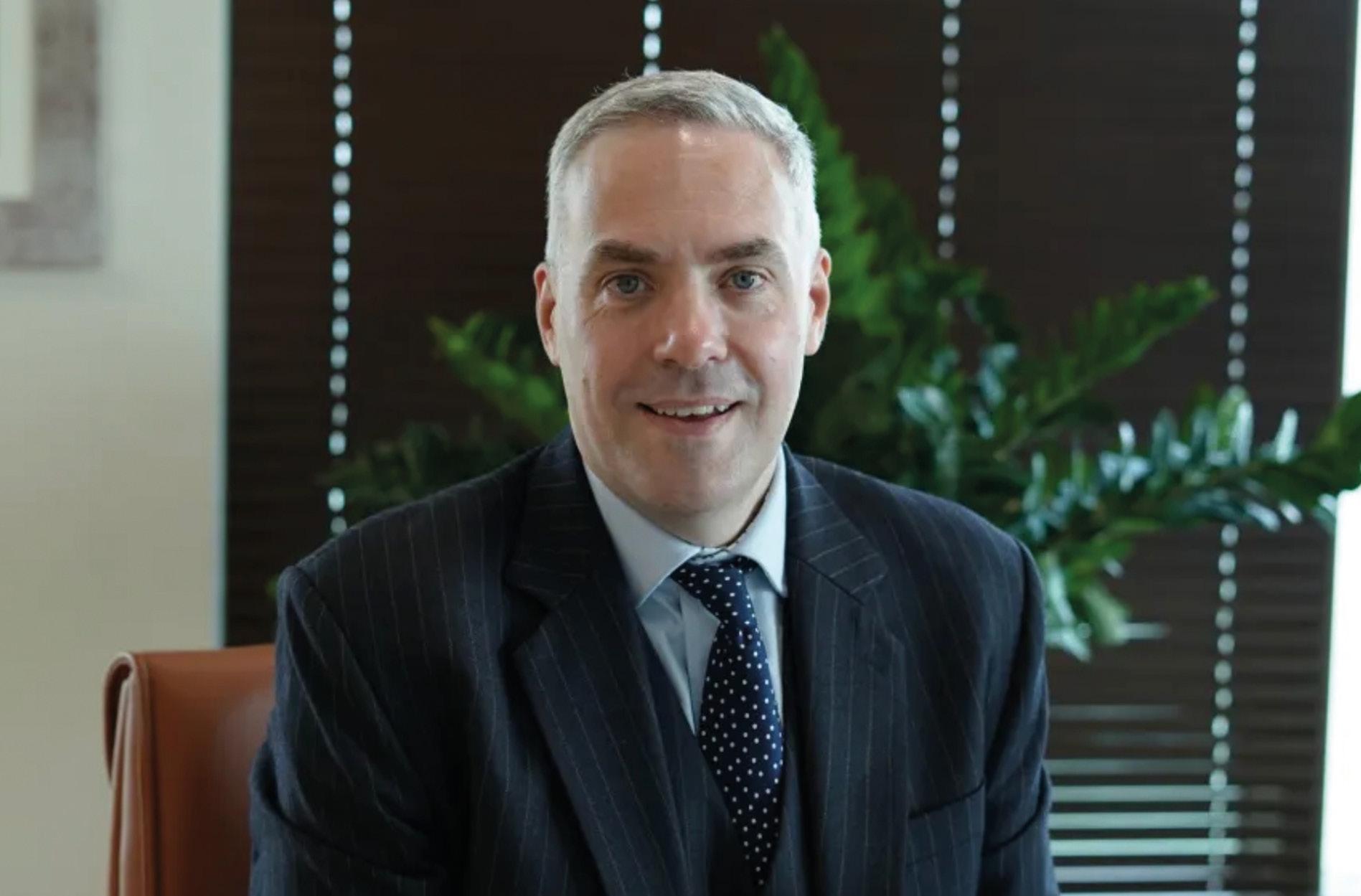

My key message is a simple one: Get in the room with your target executives.
Ewan Macleod
Founder, New Era Digital Partners
know they need to reach 1-2 individuals at every bank to begin to drive and develop that institutional relationship. They understand they’re in the business of Enterprise Sales. Unfortunately, nobody else in the company is focused on that.
Everyone else has drunk the Fintech Kool-Aid. Everyone else – from the CEO to the Chief Marketing Officer – is busy obsessing over ‘leads’. More leads. Let’s get more leads. Buy a new lead generation system! Get a premium Zoominfo account! Let’s get a new CRM! Blow more budget on another new website! Let’s do a report, to get leads! Leads! Leads!
As for the Biz Dev team? What are they doing? Why aren’t they converting all these leads we’re sending them, asks the Marketing team.
“We don’t need your irrelevant leads from this week’s nonsense campaign,” replies the Biz Dev team, “We know who to speak with. We need to get in the room with Bryan and Jane from [insert bank name].”
“We gave you their email address and mobile numbers,” replies the Chief Marketing Officer, eyeing the CEO who nods with approval, “It cost us a LOT of money to get those via that contact scraper service.”
The Biz Dev team are backed into the corner.
“Come on, phone them, stop hiding away!” chides the CEO.
The Biz Dev team are privately horrified – but there’s no support. No understanding. No awareness. It’s 2025 and they’re back to bashing phones. But nobody answers the phone anymore. No bank executive ever answers an unknown number. Ever. They did it once, back in 2022 – and they learned, very quickly, never to do that again. Now they let the procurement team manage all that. Likewise, executives have learned to
avoid unsolicited incoming emails and LinkedIn messages. I remember making the mistake of innocently opening a spam email from a vendor (by mistake!) only to receive a barrage of, “Hi, I see you’re interested in our services…” automated emails that continued for weeks.
Many of the executives I know are keen to engage in constructive discussions with Fintech vendors. If it was simple. If it didn’t come with the huge pain of being subjected to constant marketing overload from vendors as a result.
Back to the Fintech CEO. Under pressure from the board and investors, they’re doing their best business Judo and redirecting the pressure at the Biz Dev teams:
“Make more calls!”
“Make more sales!”
“Do more business!”
It doesn’t take much for Biz Dev teams to wilt under such sustained pressure. Zero support. Zero budget. Zero awareness from their colleagues. Just constant pressure.
It’s at this point I am often introduced to Fintech leadership teams by worried investors.
My key message is a simple one: Get in the room with your target executives. It’s a message already familiar to the Biz Dev teams, of course. But it’s quite a difficult one for other management to hear. It’s almost too simple. And it doesn’t come with easily measurable ‘results’ like the existing approaches. It’s difficult to consider, especially when so much focus, effort, energy and budget has been spent doing the total opposite.
I’ve often faced exasperated Chief Marketing Officers, demanding, “Well, what am I supposed to do?”
My response? I turn and point at the Biz Dev director and say, “Put them in the room with the target customer.”
The CMO will often respond by pointing out that, ‘This isn’t their job’.
Ewan is the founder of New Era Digital Partners, offering advisory and strategy consulting to banks and FinTech companies in the Nordics, Europe, UK and the Middle East. He is active on LinkedIn and a regular guest speaker on the topics of FinTech and Digital Transformation in Financial Services.
And they are correct. In many Fintechs, the Marketing function is to obtain lots of ‘qualified’ leads. (‘Qualified’ meaning ‘They work for a bank’).
Go and look at the actual leads being generated. Look at them. I will often insist that the detail is shown on screen whilst we discuss the topic.
“Junior Developer, Anti-money Laundering Team”
What’s this? I ask. That’s not a decision-maker! Besides, we already know who the decision-makers are. Next?
“Graduate Trainee, Compliance.” Next!
This is the actual horror of Fintech Marketing Lead Generation laid bare in 2025.
The Marketing teams still think their job is generating leads. Why? Well, I’d suggest it’s because leads are measurable. No CMO does anything, nowadays, that isn’t measurable, right?
When it comes to Enterprise Technology Sales, business is resolutely done between people. Not companies. Yes, you can sell me a Netflix or Disney subscription through a few banner ads –and you can readily track and measure that sales journey to winning the $12 fee from my card. But you can’t do this with Enterprise sales. You need to get your Biz Dev people into the room with target customers. This is how it’s done.
To do this, you need to radically adjust your approach to marketing, business development and sales. Stop tracking irrelevant lead generation KPIs that feel good but don’t deliver the goods. Start tracking physical meetings generated with target customers.
The Fintech industry is blessed with great Marketing talent – so I find it enormously exciting when Marketing teams are encouraged to focus their intellect, capability and creativity on helping their Biz Dev teams get in the room.
Quickly, ideas come flying. Marketing teams are brilliant at this, once they’re freed from the straitjacket of mass irrelevant lead generation.
Roundtables. Custom events. Breakfast briefings. Podcast interviews. Sideevents at big conferences. Experience days. Customer summits and conferences.
It’s time to unleash your Marketing teams to help them fully support their Biz Dev colleagues.
It’s time for CEOs to radically adjust their approach: Stop focusing on leads. Start focusing on getting your Biz Dev people in the room.
By Cecilie Fjellhøy
In 2024, fraud was finally labelled a societal problem by the Norwegian National Authority for Investigation and Prosecution of Economic and Environmental Crime. Yet, this recognition feels bittersweet. The root cause of our inaction, I believe, is the stigma attached to fraud—a stigma that prevents us from tackling it like we do other crimes.
After going public with my own experience as the whistleblower in the Tinderswindler case, one of Netflix’s most-viewed documentaries, I was intrigued by the public’s response. Instead of focusing on why the criminal was still at large or the flaws that allowed such crimes to happen, the narrative shifted to victim-blaming. Were we, the victims, gold diggers who deserved what happened to us? It was a cruel echo of the kind of questions faced by victims of other crimes, like asking a rape survivor why they were in a certain place or wearing certain clothes.
Fraud is one of the few crimes where victims are openly mocked and told they’re at fault. This attitude shifts responsibility away from the criminals and onto those who suffer. It’s damaging, and it creates an environment where victims are left without support and fraudsters can continue unchecked.
When I woke up from the nightmare of my fraud experience, I naively believed the system would help me recover. Instead, I faced a harsh reality: victims of financial crimes are often left to fend for themselves. In my case, I was left with over nine loans and £200,000 in debt.
The psychological toll was immense. I had fallen into the sunk-cost fallacy— the more I invested in a relationship, the harder it became to accept the truth and escape.
Coming to terms with being a victim

Cecilie Fjellhøy,
Keynote Speaker & activist at LoveSaid
was excruciating. Fraud often isolates its victims. We lie to ourselves, our families, and even financial institutions to sustain the illusion. This isolation leads to self-blame, a sentiment that society, law enforcement, and financial systems readily reinforce.
Adding insult to injury, I was taken to court by four banks for debts I couldn’t
repay. Billion-dollar institutions pointed the finger at me, while my fraudster walked free. This level of systemic failure compounds the trauma and leaves victims feeling utterly abandoned.
Professor Marte Kjørven from the University of Oslo has described the
Fraud is one of the few crimes where victims are openly mocked and told they’re at fault.
Cecilie Fjellhøy Keynote Speaker & activist at LoveSaid
treatment of fraud victims in Norway as the country’s greatest collective economic injustice. I couldn’t agree more. By focusing on blaming victims instead of holding criminals accountable, we’ve created an environment where fraud thrives. Why wouldn’t it? It’s one of the most lucrative crimes, with minimal consequences even for those who are caught.
Fraud is often called a financial crime, reducing its impact to stolen money. This view ignores the devastating human cost. Research has shown parallels between fraud and domestic abuse, including economic abuse, isolation, humiliation, and psychological manipulation. These aren’t just money problems— they’re deeply personal and damaging. Some victims even take their own lives under the weight of their suffering. I’ve been on the receiving end of soul crushing messages from victims themselves not knowing how to continue their lives, or family who’s been left.
As a UX designer with a decade of experience in tech, I once worked to make processes as seamless as possible. But when I became a victim, I saw the dark side of frictionless systems. It took me just two minutes to apply for 10 bank loans and less than two days to secure over £50,000 in unsecured loans. I even warned my fraudster about how frighteningly easy the process was: “No wonder people go bankrupt here.” Two years later, I found myself applying for personal bankruptcy because of those very actions. This ease of access shows a critical flaw in our financial systems. While convenience benefits honest users, it also empowers criminals. Worse, when victims fall prey to these flaws, they’re treated as complicit rather than as casualties of systemic negligence.
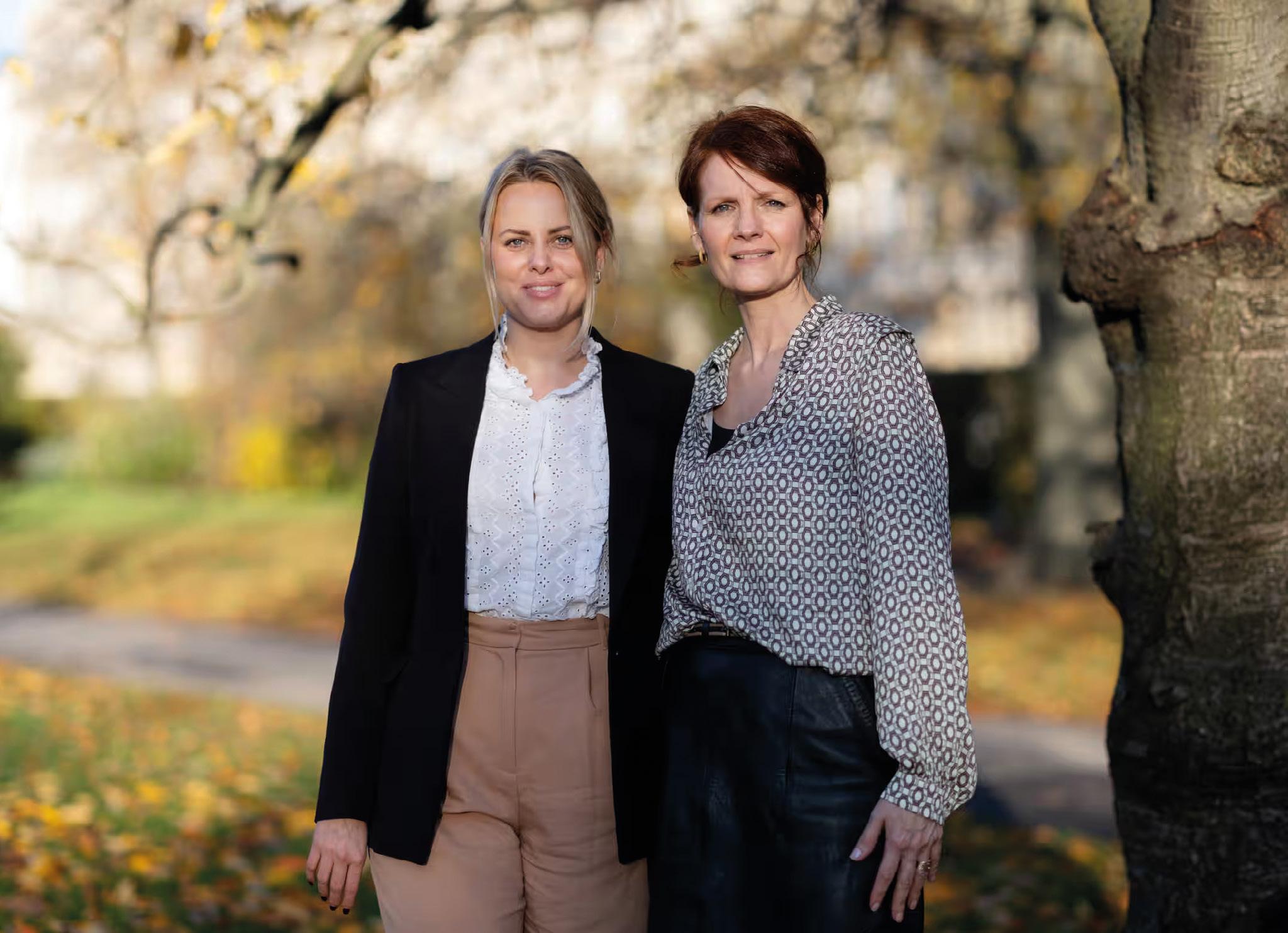
The Bigger Picture Fraud isn’t just about stolen money. The funds often fuel larger criminal enterprises, including drug trafficking, human trafficking, and terrorism. Yet, we fail to treat fraud as the serious threat it is. Instead, we allow outdated attitudes and broken systems to let the problem grow.
Fraud’s human cost goes far beyond the financial. Victims lose trust—in people, in institutions, and in themselves. Trust is the glue that holds society
My determination to change how fraud victims are treated—and my deep desire to prevent anyone else from experiencing what I did—led me to co-found LoveSaid with Anna Rowe. LoveSaid is a non-profit organization dedicated to supporting victims of romance fraud and financial abuse and driving meaningful change.
At LoveSaid, we believe one simple truth: no one should have to recover alone. We offer emotional support,
When it’s eroded, everyone feels the effects.
To combat fraud effectively, we need serious change. First, we must stop blaming victims. Recognize that they’ve lost more than money; they’ve lost parts of their lives. Second, we need to use technology for good, not thinking the criminals have won, even though they rapidly change tactics and methods (AI scams and deepfakes). Third, we need
collaboration across industries to share data and ideas.
Finally, let’s make fraud prevention the new customer service. By focusing on security and accountability, we can rebuild trust and create a safer society for everyone.
Fraud can happen to anyone. It’s time we treated it like the serious issue it is— not just as a financial problem, but as a societal one. Together, we can protect those at risk and stop fraud before it destroys more lives.
practical guidance, and vital resources to help survivors rebuild their lives after fraud.
But our mission goes beyond support—it’s about driving systemic change. LoveSaid actively advocates for stronger victim protections, pushing for policy reforms that hold financial institutions and tech companies accountable. We work to close the gaps that fraudsters exploit by collaborating with banks, tech platforms,
and policymakers to build safer online spaces and implement better safeguards. Our work includes providing specialized training, leading workshops, and participating in webinars, conferences, and roundtables.
Our purpose is clear: empower survivors, break the stigma, and fight for real change in how fraud is prevented and addressed. If you want to know more, or support our work please visit lovesaid.org.
The Nordic banking market is renowned for its high level of digital maturity. However, the same maturity has led to a sense of complacency, leading to solutions that struggle to compete with more agile fintechs, says Jorno Levels, Account Executive at Mambu.
By R. Paulo Delgado
NFM caught up with Jorno Levels to discuss Mambu’s focus for the Nordics and its plans for 2025.
NFM: How is technology changing the financial crime landscape?
Jorno Levels: Mambu is the first cloud-native, software-as-a-service (SaaS) core banking platform. We started out in 2011 in Africa. In two years, 100 organizations in 26 countries adopted our engine. Today, our cloud banking platform helps over 260 customers provide lending, deposits, payments, and many other solutions to 114 million end users in over 65 countries.
What makes Mambu’s composable banking model unique?
Our composable banking model ensures complete flexibility, allowing you to integrate best-of-breed solutions around the core and unlock unlimited innovation.
In addition, our “composable bankin-a-box” model simplifies the process by having a single System Integrator (SI)

manage the entire contract. The SI will recommend, integrate, and manage best-of-breed solutions around a core like Mambu, reducing the complexity of managing multiple technology contracts. This approach is created with scale, agility, ease-of-use, and speed in mind and offers more flexibility than an end-to-end (E2E) modular banking model while providing a streamlined, unified experience.
We see this model becoming more and more common, particularly in the
Mambu is positioned at the core of this ecosystem. While we provide the foundational architecture—a composable and configurable core banking platform—we believe that true transformation cannot go without collaboration. Our extensive ecosystem of partners, including fintech technology providers, SIs, and consulting firms, is key to delivering comprehensive solutions.
Mambu’s role in this transformation is to offer a viable and compelling alternative to traditional, often localized, banking solutions in the Nordics. We enable financial institutions to choose a delivery model that fits their needs best. Whether it’s our “composable bank-in-a-box” solution for seamless, managed transformations or our “headless” core banking platform designed for tech-savvy teams seeking flexibility and extensibility, Mambu empowers Nordic financial institutions to innovate, scale, and adapt with ease.
What are Mambu’s priorities for 2025?
A top priority is strengthening our collaboration with Nordic strategic partners. Together, we will continue investing in localizing the Mambu solution and enhancing our offering.
The appointment of Ivneet Kaur as our new Chief Product and Technology Officer will help us achieve that even faster. With over 20 years of expertise in cloud infrastructure, AI, and product/platform engineering, Ivneet will drive Mambu’s technology strategy and innovation.
Speaking of innovation, Mambu’s recent acquisition of Numeral, a payment fintech company, underscores just that. With Numeral we are able to provide even better payment solutions that are seamlessly integrated into Mambu’s cloud banking platform.
Nordics where the demand for localized solutions is high.
What is Mambu’s unique offering for the Nordic ecosystem?
The transformation of the Nordic financial landscape is driven by fintech innovation. And innovation means collaboration. Composable banking is a good example of this; it inherently depends on the integration of multiple fintech offerings via modern APIs.
This translated into a major milestone: the partnership with a leading Swedish retail bank to fully transform and migrate their business onto Mambu. After an extensive evaluation process, the bank concluded that Mambu’s cloud banking platform aligns perfectly with its ambitions, and is compliant across the Nordic market.

Mastercard launched the Lighthouse program in 2018 in the Nordics and Baltics to foster symbiotic growth between banks, fintechs, and Mastercard. The program’s achievements are laudable: The companies that participated in the Mastercard Lighthouse program have raised over €1 billion during or following the program. The winners of the Mastercard Lighthouse program receive an invitation to the Mastercard Global Start Path program to pitch for potential participation.
Lighthouse provides global network access to help startups scale geographically. It involves structured workshops with banks, advisors, experts, and investors,” says Mats Taraldsson, Head of Fintech and Impact Tech Engagement at Mastercard, Northern Europe.
The program has two main tracks:
• Lighthouse FINITIV, the partnership program focused on fintech startups and scale-ups
Lighthouse MASSIV, which is focused on social impact startups that empower sustainability
“Our MASSIV program aligns with the UN’s Sustainable Development Goals, particularly in financial inclusion, making the world more prosperous and secure, and sustainability and environmental initiatives,” says Mats Taraldsson.
Why Mastercard began the Lighthouse program in the Nordics and Baltics Mats Taraldsson describes Mastercard’s mission as one of providing globally

excellent payment solutions and making those payments safe, simple, and secure for consumers, merchants,

businesses, and governments. “Innovation is key for us to accomplish this,” he says.
Mastercard began the Lighthouse program due to the immense innovation and creative solutions happening in the Nordics and Baltics.
Because the region is made up of small geographic zones with different languages, the startups in the area have focused on a global market from the start.
The Baltics, especially, focus on a European market from the start due to each country’s relatively small size.
“There are no signs of innovation slowing down in the Nordic and Baltic regions,” says Taraldsson.
The Nordics and Baltics have a vibrant fintech startup landscape, and Mastercard hopes to help these companies through primarily a partnership approach.
What the program offers Mastercard’s focus is to help companies grow through expert guidance, access to bank networks and expert advisors, and through supporting geographical scaling. In some cases, Mastercard will become a co-creator where the startup’s services might integrate well with Mastercard services. Mastercard may also partner directly, such as in the case of Aiia, a previous year’s participant that Mastercard initially partnered with and then ultimately acquired.
About the Program for start-ups
Mastercard selects 20 participants twice a year to take part in the Fall and Spring Lighthouse program. All participants must be based in or active in the Nordic or Baltic region, and focus on some aspect related to payments.
When selecting participants to the program, Mastercard looks at these factors: Likeliness to succeed with their service or solution • Market interest Potential
The likelihood to succeed is the most important factor in the selection process.
The Lighthouse FINITIV Spring edition runs from March to June, and the Fall edition runs from September to December. Each program consists of three in-person workshops with continuous, remote support. After the first workshop, partners and startups will determine which potential partnerships will be pursued.
Three finalist companies will be invited to the Mastercard Grand Finale event typically held at Latitude 59 in Tallinn for the Spring program and Slush in Helsinki for the Fall program. The program winner will receive an opportunity to pitch at Mastercard’s Start Path Pitch Day.
Additionally, all participants become part of the Mastercard Lighthouse alumni network, which remains active through ongoing communication and meetups.
When Nelson Wootton and Steve Round launched a UK bank for lowincome customers twelve years ago, they ran head-on into the problem that led to the creation of SaaScada’s revolutionary platform. They discovered that nothing on the market could deliver the product or data agility they wanted.
By R. Paulo Delgado
We found the process of buying and deploying core banking really painful,” Wootton says. “Getting the reporting from different systems to understand how customers use the products then takes 6-8 weeks. In the worst-case scenario, the reporting might reveal there’s a problem. Implementing changes then takes another three months and results in a hefty invoice from the provider. Your team then waits the usual eight-week reporting period to know if the problem has been solved.
“So, we’re talking about the better
part of a year to do a single product iteration. In today’s now-now-now world, that’s an aeon,” says Wootton.
Rethinking data architecture
Creating yet another microservices or API-driven core banking solution wasn’t going to solve the underlying issue. Wootten recognized that all existing core banking systems were being hampered by their architecture.
“They use structured data whereas we use completely unstructured data. We then have an event system that reads the unstructured data and builds structured databases for

facilitate lending. All the code thereafter then becomes tightly coupled with the lending code, making it challenging to add code for other banking services that don’t somehow relate to lending.
The result is immense complexity, and a system so tightly intertwined that changing any part of it might have unforeseen ramifications on numerous other parts,
SaaScada tackled this by moving away from the concept of product modules. Instead, they provide a full suite of features within the Product Sequencer, enabling clients to create multi-ledger accounts which may include features and wallets that cross traditional product boundaries. Clients can mix and match features and intertwine without any fear of breaking other parts of the system.
“The ability to change, innovate, and configure your own service, alongside real-time data to tell you what your customers do and don’t do with those products—it’s an incredibly powerful position to be in,” says Wootton.
We’re already
deploying
in hours. By the end of this year, we’ll be deploying in minutes.
Nelson Wootton Co-Founder and CEO, SaaScada
clients,” Wootton says.
By adopting a non-structured approach to data, SaaScada’s core banking system can adapt to the needs of the client. Reading and writing data are two completely uncoupled processes, meaning reporting can scale independently of transaction volume.
Lending is what banks do, but shouldn’t be what the code predominantly does
A bank’s primary business is lending. Historically, this meant that core banking systems initially began with code to
The proof is in the pudding In evidence of its success, Allica Bank, the UK’s fastest-growing fintech ever, according to its website, utilises SaaScada’s core banking technology. Allica Bank was also named the UK’s fastest-growing company in The Sunday Times’ Top 100 for 2024. Allica hit profitability in 2023 and hopes to capture 10% market share in the next five years.
SaaScada has clients in the UK, Switzerland, Mauritius, Zimbabwe and South Africa, and has its eyes set on the Baltics and Eastern Europe. The company is about to start its Series A and is looking to open offices in Singapore and Dubai. Perhaps the most mind-boggling of all its feats is the ability to sell fully-fledged core banking per hour for less than the cost of an average lunch.
“We’re already deploying in a few hours. By the end of this year, we’ll be deploying in minutes. Don’t bother with an RFI or an RFP. Pick a data centre you want it deployed in, and we’ll deploy it,” says Wootton.

Nelson Wootton Co-Founder and CEO, SaaScada
Established in 2000, Enterprise Estonia was formed by merging various governmentcontrolled agencies focused on export, foreign investment, technology, regional development and tourism.
By Tom
Our mission is to promote sustainable economic growth across Estonia by fostering innovation, internationalization and regional development. We aim to empower entrepreneurs and businesses throughout the country, supporting the creation of more successful enterprises and innovative business environments.
Estonia: A Global Trailblazer in Fintech Innovation
Often hailed as the “startup nation,” Estonia has established itself as a hub of innovation and entrepreneurship. In the fintech sector, the country’s small size has proven to be a significant advantage, enabling close-knit networks and collaborations that transcend public and private sector boundaries. Combined with its forward-thinking government policies and advanced digital infrastructure, Estonia is leading the charge in reshaping the fintech landscape.
One of the most exciting trends in fintech is connected commerce, which leverages

personal data to create seamless and personalized buyer journeys, whether online or offline.
Estonia is uniquely positioned to thrive in this space, thanks to its secure and transparent data management systems. Residents can easily authenticate and control data access for merchants and banks, ensuring a balance between privacy and personalization. This approach not only enhances the shopping experience but also fosters trust among consumers, businesses and financial institutions.
Estonia is set to lead in the field of embedded finance, particularly in payments, credit and business administration. By integrating e-money and payment solutions into daily-use apps, such as grocery retail platforms or online stores, the country is simplifying financial transactions and adding convenience to everyday life.
The development of eIDAS 2.0 compliant eID wallets promises to take this transformation even further, enabling businesses to offer highly contextualized financial services tailored to the needs of their customers.
Estonia’s fintech success is underpinned by its advanced digital infrastructure, including the X-Road data exchange

administrative processes are straightforward, making it an ideal environment for setting up financing structures and holding companies.
Estonia’s fintech success is underpinned by its advanced digital infrastructure, including the X-Road data exchange layer and a thriving API economy.
Tom Holgersson Enterprise Estonia (EIS)
layer and a thriving API economy.
These technologies facilitate real-time operations, enabling businesses to streamline legal, compliance and financial processes. The system benefits not only local companies but also e-residents, making Estonia an attractive destination for international entrepreneurs.
The country’s ease of doing business further enhances its appeal. Incorporating a legal entity in Estonia can be accomplished in minutes and the
One of the most pressing challenges in 2025 is navigating the increasingly complex regulatory environment. Enterprise Estonia provides essential support by connecting fintechs with legal and compliance experts, offering tailored guidance and organizing workshops to keep companies informed of the latest developments.
Looking ahead, Enterprise Estonia is poised to accelerate its impact on the fintech ecosystem with priorities designed to foster innovation, drive sustainability and position Estonian companies on the global stage.
Our first milestone is building more unicorns, reinforcing Estonia’s status as a leader in entrepreneurial success. Through export consulting, international matchmaking and participation in global trade events, we help Estonian fintech firms unlock opportunities and establish a competitive presence across borders.

Prompted by the increasing frequency with which I hear the term “quantum” being thrown around as the next big thing, I decided to venture, or at least try to, into the perplexing, confusing, and often just plain weird world of quantum. What I thought would be a straightforward exploration of innovation in technology led me deep into the history of physics and the fundamental understanding of how reality works, long before I could begin to grasp what quantum is and why it’s touted as an exponential revolution.
By Chris Crespo
I’ve written this piece as I would have liked it explained to me, after many hours of reading and researching what this “quantum” thing is all about and why it could potentially upend everything we’ve built so far, at least, technologically. Here’s my account. But first, let’s take a look at the physics of reality.
For centuries, classical physics has been our go-to explanation for how the world works. Newton’s laws, Maxwell’s equations, and Einstein’s general relativity have shaped our understanding of everything from the motion of planets to the behavior of light. It all made perfect sense. That is, until we started looking closer into the atomic and subatomic world.
The early 20th century marked a critical turning point. Discoveries like Planck’s quantum hypothesis and Einstein’s photoelectric effect challenged the classical understanding of physics. They revealed a strange and probabilistic nature to the microscopic world, where particles like electrons, photons, and other subatomic particles, behave in ways that defy the rules of classical physics.Unlike objects in our everyday experience, which have definite properties and predictable behaviors, quantum particles follow the principles of quantum mechanics, where outcomes are inherently probabilistic. At its core, this means that the result of an event or process cannot be predicted with certainty, even if all the initial conditions are known. Instead of a single, definite outcome, there are multiple
possible outcomes, each with a certain probability of occurring.This gave birth to quantum mechanics, a radical new theory that describes how particles like electrons and photons behave in ways that defy classical expectations. Ok this is bit theoretical but stay with me, you’ll see why this is important a few lines ahead. Unlike classical objects, quantum entities can exist in multiple states simultaneously, a phenomenon known as superposition. They can also be entangled, meaning the state of one particle instantaneously influences another, no matter the distance. And this is where things start to get weird as superposition and entanglement are two core principles of quantum mechanics that challenge our traditional understanding of reality.
In classical physics, an object exists in one place at any given time. We all know this, two material objects cannot be in two places at the same time. An apple can’t be both on the table and in the fridge simultaneously. This is how all of us experience material reality. The quantum world is different, particles like electrons or photons can exist in multiple states at once. This is known as superposition. You may want to re-read that last sentence again. Done? Ok it gets wiereder. A particle can be in two different energy states simultaneously until it is measured. I know, it makes no sense, but in quantom physics particles remain in ambiguous states until they are observed. It is then and only then that they it ‘collapse’ into one specific state.


Entanglement is another phenomenon that defies classical intuition. When particles become entangled, their states are interdependent, no matter how far apart they are. Whether they are a few nanometers or billions of light-years away. This phenomenon is often referred to as “non-locality. If you measure the state of one particle, the state of the other is instantly known, defying the classical notion that information cannot travel faster than the speed of light.
These concepts are profoundly counterintuitive. In our macroscopic world, objects have definite positions and states. But in the quantum realm, particles follow a different set of rules that seem almost absurd and illogcial. This shift in understanding is what makes quantum mechanics so revolutionary, and it’s the foundation upon which quantum computing is built, opening doors to unprecedented computational power, but we’ll get into that later on.
So far I’ve described the wacky concepts of superposition and entanglement, if you are anything like me, by now you should be asking yourself - but how?
And how could this even be measured?
Well scientists who study subatmic particles have devised a number of clever experiments. For example, they might shoot tiny particles through a barrier with two slits. Instead of going through one slit
Now, let’s talk about how these mind-bending principles of quantum physics are being used to build amazing quantum computers.
Imagine a regular computer as a super-fast librarian who can only look at one book at a time. Each book represents a piece of information, and the librarian flips through them very quickly. In classical computers, a bit is like a tiny switch that can be either 0 (off) or 1 (on). It’s like reading one story at a time.
But in quantum computing, a quantum bit (qubit), thanks to superposition, can be both 0 and 1 at the same time. This is like reading many stories at once.
Because qubits can be in multiple states simultaneously, a quantum computer can perform many calculations at once, making it incredibly powerful and much faster than regular computers.
Now, let’s bring in entanglement.
or the other like a tiny apple would, the particles act like they’re going through both slits at the same time, creating patterns that show this strange behavior.
Only when they measure or observe the particles do they ‘choose’ a specific path, just like the apple would choose a place when we look at it.
Now, let’s talk about entanglement. Imagine you have two magical apples that are somehow connected. If you change something about one apple, the other apple changes instantly, no matter how far apart they are. This is what happens with entangled particles. When scientists measure one particle, the other one responds instantly, as if they were communicating faster than anything we know.
These discoveries were made through careful experiments and measurements that showed these particles behaving in ways that classical objects never do. This shift from the predictable world of classical physics to the surprising world of quantum physics is like discovering a whole new set of rules for how things can work. These rules are what make quantum computing possible, allowing us to do things with microprocessors that we could only dream of before.
Is this making you uncomfortable? Well, it should be! But don’t worry, it gets even more interesting.
Remember our magical apples that are connected no matter how far apart they are? In quantum computing, entangled qubits can work together in a way that traditional bits cannot. This means that quantum computers can solve certain problems much more efficiently by examining many possibilities at once.
For example, they can quickly search through large databases, solve complex mathematical problems, and even break codes that would take normal computers millions of years.
In essence, quantum computing harnesses the weirdness of quantum physics to do things we never thought possible. It’s like upgrading from a bicycle to a spaceship in terms of computing power.
And that’s why these tiny, confusing particles are so important, they’re opening up a whole new world of possibilities. By combining superposition and entanglement, quantum computers can tackle complex tasks like modeling molecules for drug discovery, optimizing logistics, or breaking encryption. It’s like having a superpower in the world of computing. And that’s the exciting potential of quantum computing which represents a giant leap into the future.
Traditional computers use microprocessors made of silicon chips. These chips have tiny transistors that act like little switches, flipping between 0 and 1 to process information.
That’s the exciting potential of quantum computing which represents a giant leap into the future.
Chris Crespo
Head of Content at Nordic Fintech Magazine
Quantum processors, however, work differently. Instead of transistors, they use qubits that can be made from various quantum systems, like atoms, ions, or superconducting circuits.
Creating a quantum processor involves trapping these quantum particles in a way that they can be controlled and manipulated. For instance, superconducting qubits are tiny circuits made from materials that conduct electricity without resistance at very low temperatures. These qubits can then be put into superposition and entangled with each other using precise control mechanisms, like lasers or electromagnetic fields.
By harnessing the unique properties of qubits, engineers can create processors that can solve problems much faster than classical computers.
But quantum computers are not just faster versions of classical computers; they represent a whole new way of processing information. This immense computational power is being channeled by leading tech companies, research institutions, and governments around the world. Companies like IBM, Google, and Rigetti are at the forefront, developing quantum processors and making them available through cloud platforms.
Qubits are incredibly delicate because they rely on quantum states, which are easily disturbed by their environment.
This sensitivity is due to a phenomenon called “decoherence,” where interactions with the surrounding environment cause the qubits to lose their quantum properties. For instance, any form of electromagnetic radiation, thermal vibrations, or even cosmic rays originating from the sun, can interfere.
This is why quantum computers are incredibly delicate and require very specific conditions to operate. They
need to be housed in specialized facilities where they can be kept at extremely low temperatures, close to absolute zero, to maintain the stability of qubits.
At such low temperatures, thermal vibrations are minimized, reducing the chances of decoherence and allowing the qubits to maintain their quantum states. This means they can’t just be placed in traditional data centers; they require specialized environments and equipment.
Right now, quantum computers are primarily being used for research and development. They are helping scientists explore new materials, optimize complex systems, and improve artificial intelligence.
As the technology advances, we expect quantum computers to overhaul fields like cryptography, logistics, and financial modeling. The potential is vast, but we are still in the early stages of unlocking it.
Today, traditional computers play a crucial role in financial services. They are used for tasks like financial modeling, risk assessment, fraud detection, and high-frequency trading. These tasks require processing vast amounts of data
and running complex algorithms, which can be time-consuming and computationally intensive.
Quantum computing promises to revolutionize these fields by providing unprecedented computational power.
Here’s how:
1. Financial Modeling: Quantum computers can simulate complex financial systems with much greater precision. This means more accurate predictions and better risk management. For example, they can quickly evaluate countless scenarios for portfolio optimization, which is currently limited by classical computers.
2. Fraud Detection: Quantum computing can analyze patterns in data more effectively, quickly identifying anomalies that might indicate fraudulent activity. This enhanced capability can significantly reduce false positives and catch fraud more efficiently.
3. Optimization Problems: Many financial tasks, like determining the best trading strategies or managing supply chains, are optimization problems. Quantum computers can solve these problems faster and more accurately than classical computers.

The future vision is that as quantum computing technology matures, it will be integrated into the financial infrastructure, offering faster, more accurate insights and decision-making capabilities. Financial institutions are already exploring ways to harness this power, anticipating significant improvements in speed, efficiency, and accuracy.
Quantum computing offers unmatched capabilities in analyzing and predicting financial outcomes. Traditional computers struggle to process the vast and complex data sets required for accurate risk assessment and scenario modeling. Quantum computers, with their ability to handle multiple possibilities simultaneously, can simulate financial systems far more efficiently. For example, portfolio optimization—a problem involving trillions of combinations—can be solved in seconds with quantum algorithms.
Beyond portfolio management, quantum technology enhances stress testing. It helps financial institutions anticipate extreme market conditions by simulating highly complex, nonlinear events. This makes it easier to prepare for crises and mitigate risks effectively.
Quantum computing is changing compliance and fraud detection by enabling institutions to analyze patterns and behaviors in real-time. Traditional systems often flag too many false positives or miss subtle anomalies. Quantum computers excel at processing vast datasets and identifying complex correlations that would be impossible to detect otherwise.
For example, HSBC has partnered with quantum technology firms to explore ways to enhance fraud detection and optimize its risk management strategies. Similarly, JP Morgan Chase is working with IBM’s Quantum Computing division to develop algorithms that improve financial modeling and anomaly detection. These advancements aim to reduce false positives while speeding up the identification of suspicious activities.
BBVA, a leading Spanish bank, is exploring quantum technology to enhance its anti-money laundering (AML) processes. The bank is


leveraging quantum systems to analyze large volumes of transaction data more efficiently. By identifying patterns and anomalies that traditional systems might miss, BBVA aims to streamline its compliance efforts and reduce operational bottlenecks in monitoring cross-border transactions. This approach not only improves accuracy but also helps the bank detect and prevent financial crimes more effectively.
Optimization in Trading Strategies
Trading relies heavily on optimization, and quantum computing provides an edge by solving problems faster and more comprehensively. For instance, portfolio rebalancing and arbitrage opportunities often require analyzing multiple factors simultaneously, like asset prices, market conditions, and regulatory constraints. Quantum computers can evaluate these variables in parallel, providing traders with near-instant optimal solutions.
Additionally, quantum systems enhance algorithmic trading by modeling market behaviors more accurately. They can simulate scenarios that account for non-linear and chaotic dynamics, improving predictions and decision-making. This is particularly valuable in high-frequency trading, where milliseconds can make the difference between profit and loss.
Optimization in Trading Strategies
Trading relies heavily on optimization, and quantum computing provides an edge by solving problems faster and more comprehensively. For instance, portfolio rebalancing and arbitrage opportunities often require analyzing multiple factors simultaneously, like asset prices, market conditions, and regulatory constraints. Quantum computers can evaluate these variables in parallel, providing traders with near-instant optimal solutions.
Goldman Sachs is actively exploring quantum computing in partnership with quantum technology firms like D-Wave and IBM. They’re investigating ways to optimize portfolio management and improve derivatives pricing, which involves highly complex calculations.
Citi has also invested in quantum research to enhance its trading algorithms. By simulating market dynamics

with greater accuracy, Citi aims to stay ahead in high-frequency trading and generate better market insights. Furthermore, Citi’s Chief Marketing Officer, Alex Craddock, has emphasized the transformative potential of quantum computing, suggesting it could revolutionize marketing through unprecedented levels of personalization.
Quantum Computing: A Call to Action for Financial Institutions
Quantum computing is no longer a distant dream, it’s a reality in its early stages, with tangible applications already being explored by industry leaders like Goldman Sachs, HSBC, and BBVA. While mainstream adoption might take another five to ten years, the institutions taking proactive steps
today are positioning themselves to dominate the next era of financial services.
Banks and financial institutions that want to remain competitive and relevant must start exploring quantum computing now. The first steps include:
1. Building Awareness: Educate decision-makers and teams about quantum computing’s potential. This can involve hosting workshops, attending conferences, or partnering with quantum experts.
2. Collaborating with Technology Partners: Work with leading quantum technology firms or academic institutions to pilot specific use cases. Partnerships with organizations like IBM
Banks and financial institutions that want to remain competitive and relevant must start exploring quantum computing now.
Chris Crespo Head of Content at Nordic Fintech Magazine
Quantum, Google, or D-Wave can provide access to the latest research and technology.
3. Identifying High-Impact

Use Cases: Evaluate areas where quantum computing could create the most value— such as fraud detection, risk modeling, or optimization—and begin small-scale experiments to test its viability.
4. Investing in Talent and Infrastructure: Start building in-house expertise by hiring or training teams in quantum programming and algorithms. Simultaneously, assess the infrastructure needed to integrate quantum solutions with existing systems.
5. Developing a Quantum Strategy: Create a long-term roadmap for quantum adoption, ensuring it aligns with the institution’s broader goals and competitive priorities.
Fueling the next inflection in Fitnech
Early movers will gain a significant advantage by accessing never before seen computational power to optimize operations, reduce risks, and deliver innovative products. Quantum computing has the potential to redefine financial services and ignite a new era of fintech-driven solutions, creating opportunities for those prepared to embrace its disruptive nature.
The question is no longer if quantum computing will transform the industry, but when. The institutions that take action today, alongside the entrepreneurs who see the potential, will lead tomorrow. Will yours be among them?
Beyond its potential within financial services, quantum computing will also create an entirely new field of opportunities for Fintechs. Similar to how AI sparked the emergence of innovative startups offering disruptive tools for operational and front-end enhancements, quantum computing and quantum finance will drive the next wave of entrepreneurial innovation. Visionary Fintechs capable of understanding and applying this technology will develop groundbreaking solutions to supercharge the industry. From enabling seamless optimization to enhancing fraud detection and compliance processes, these Fintechs will play a foundational role in helping ecosystems leverage quantum computing’s disruptive potential.
Latvia’s fintech ecosystem stands at the cusp of a transformative moment. The past year has been a crucial one for both the FinTech Latvia Association and the broader Latvian fintech sector. As we celebrate the launch of the third annual Fintech Pulse report (please check it online here: fla.lv/pulse2024), I am proud to reflect on our many achievements and the exciting developments on the horizon.
By Tina Luse, Managing Director of the FinTech Latvia Association
With the momentum we’ve built, Latvia is not only cementing its position as a fintech hub but is also spearheading initiatives that are paving the way for a dynamic future of innovation, collaboration, and growth.
One of the most significant milestones this year has been the dramatic growth in our membership. The number of members within the FinTech Latvia Association has doubled, reflecting the expanding scope and diversity of Latvia’s fintech sector. We have welcomed new members from across the financial technology spectrum: established digital lending platforms, prestigious law firms serving fintechs, and market leaders in business lending, crowdfunding, RegTech, and even a fully fintech-oriented bank. This growing diversity is a
testament to Latvia’s rising status as an integrated fintech destination.
This rapid expansion underscores the increasing importance of Latvia as a hub for financial technology and innovation. More importantly, it highlights the value of our mission: to foster financial inclusion, democratize access to investment opportunities, and enhance financing options across various financial verticals. With this influx of new members, we are accelerating the development of a robust ecosystem capable of driving significant change both locally and globally.
A particularly noteworthy development within our growing membership is the collaboration among investment platforms within the Association. At the end of this year, these platforms came together to sign a memorandum aimed at shaping the future of regulated fintech. The memorandum calls for the unification of platforms to
create a more secure and transparent regulatory environment for alternative investment markets. The objective is to foster collaboration between fintech businesses, improve investor protection, and promote regulatory certainty. By working together, these platforms aim to advocate for responsible regulation that benefits both the industry and the wider public, ensuring that the sector continues to thrive and evolve in line with European standards.
This initiative aligns perfectly with our core mission at FinTech Latvia—ensuring that Latvia not only remains at the forefront of innovation but also leads the way in setting a global example of a well-regulated, transparent, and inclusive fintech landscape. Through this memorandum and similar efforts, we are confident that Latvia will continue to attract both investors and entrepreneurs, fostering an environment of trust and collaboration.

As a region, we are stronger together.
The importance of a strong regulatory environment cannot be overstated. This year, Latvia took significant steps forward with the successful passage of the national law for the MiCA (Markets in Crypto-Assets) regulation, a crucial milestone for the country’s fintech landscape. With this regulatory framework in place, Latvijas Banka—the Central Bank of Latvia—is now empowered to welcome new market participants with aspirations for pan-European expansion in the crypto space. Moreover, it has already been offering free pre-licensing consultations since mid-2024.
Latvia’s regulatory clarity and openness are increasingly being recognized as key factors that make the country an attractive location for fintech businesses. As I’ve repeatedly heard from companies,
“Working with Latvijas Banka feels like working with another fintech— just from the public sector.”
In addition to MiCA, Latvijas Banka continues to provide unparalleled support to fintech innovators through initiatives such as pre-licensing consultations, innovation sandboxes, and capped supervision fees for crypto service providers. These efforts ensure that companies entering the EU market can do so with ease and clarity, making Latvia a safe, competitive, and accessible jurisdiction for fintech entrepreneurs.
Among the most significant developments past year was the groundwork being laid for non-bank payment providers to gain access to the SEPA (Single Euro Payments Area) payment system via the Central Bank, which at the moment is already fully operational. This move signals Latvia’s commitment to ensuring that fintech companies have the tools and infrastructure they need to operate on an international scale.
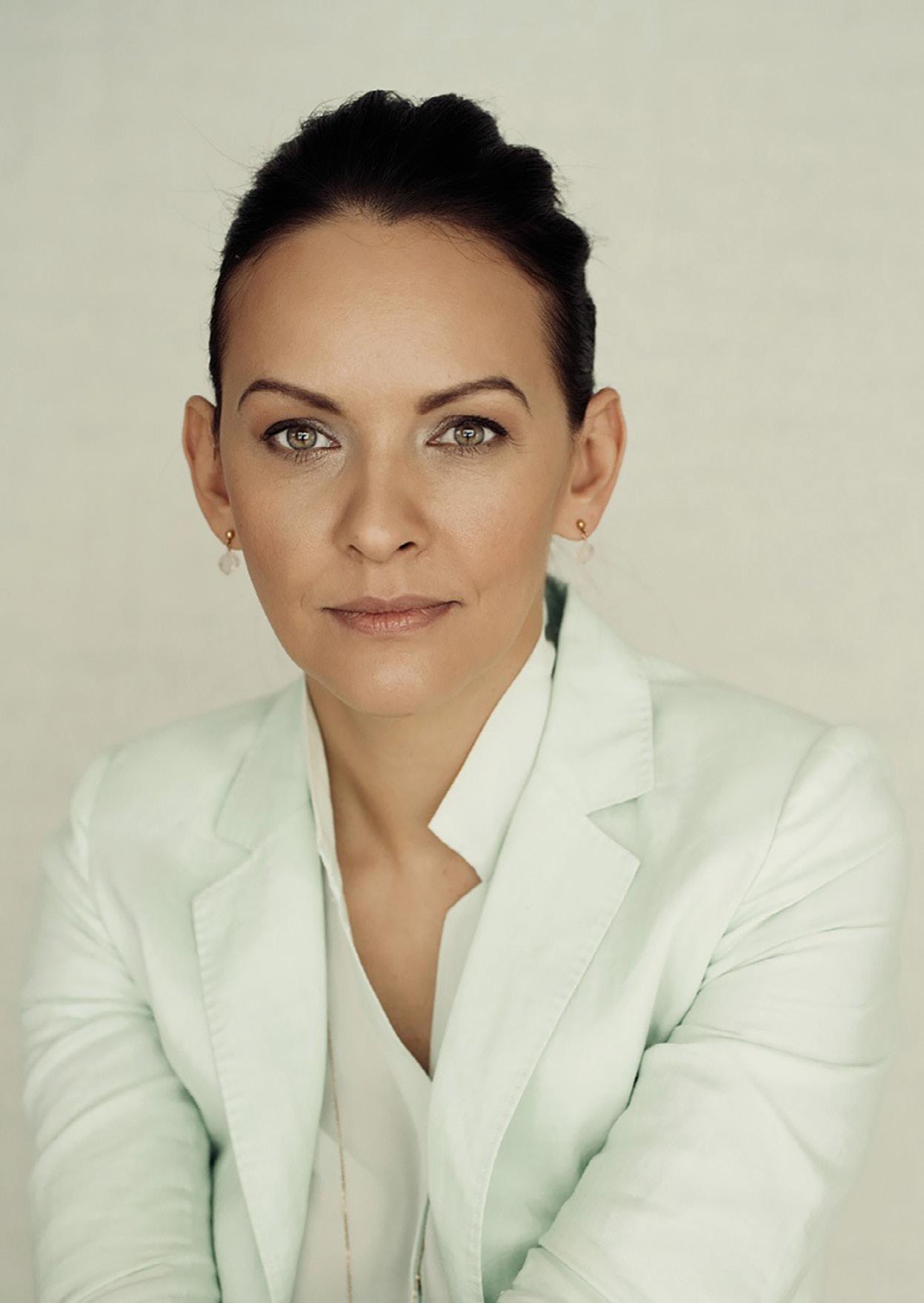
In line with our growth, we have also deepened our international collaborations. For several years now, we have been proud members of the European Digital Finance Association (EDFA).
Since January 2021, Tīna leads the Fintech Latvia Association. The aim of the Association is to unite the providers of financial services of the non-banking sector based on financial technologies in order to ensure the representation and implementation of their interests at the national and international level, promoting sustainable development and growth of the Latvian financial sector.
This prestigious platform allows us to represent Latvia’s fintech interests on a pan-European stage, further amplifying our voice within the European Union and beyond. I am especially impressed about the ECSP crowdfunding platform working group operational under the umbrella of EDFA.
With our regional partners, we are also focused on how to enhance the visibility of the Baltics as a key player in the global fintech scene. A prime example of this regional collaboration is the Baltic Fintech Days — a unique event that will bring together the fintech ecosystems of Latvia, Estonia, and Lithuania. This event reflects our shared vision of creating a sustainable, competitive, and dynamic environment for financial technology in the region. By uniting the expertise and resources of all three countries, the Baltic Fintech Days will showcase innovations emerging from our ecosystems,
foster cross-border collaboration, and highlight the value of regional cooperation in advancing the fintech industry.
The Baltic Fintech Days will serve as a platform for thought leadership, knowledge-sharing, and business development across the Baltics and beyond. As a region, we are stronger together, and this event will highlight the collective potential of the Baltics as a global fintech powerhouse. Our goal is not only to showcase the fintech innovations emerging from our countries but also to provide a platform for startups, investors, and regulators to collaborate, exchange ideas, and shape the future of fintech in Europe. With a dynamic regulatory environment, a highly skilled workforce, and strong political support, the Baltics are quickly becoming one of the most sought-after regions for fintech entrepreneurs. See you in Vilnius on 2nd and 3rd of April, 2025!
Looking ahead, we recognize the importance of restoring Latvia’s reputation as a safe and competitive jurisdiction for financial services. This year, our ecosystem has been preparing for the upcoming Moneyval assessment, which evaluates anti-money laundering (AML) and counter-terrorism financing measures. This process ensures that Latvia remains a trusted environment for both investors and fintech companies, fostering sustainable growth and reinforcing our commitment to maintaining the highest standards of regulatory compliance.
But our ambitions don’t end there. With the guidance and leadership of Latvijas Banka and the support of the Prime Minister, we are actively shaping the next phase of Latvia’s fintech development strategy. Our vision is clear: to build a robust, sustainable, and inclusive fintech ecosystem that attracts talent, fosters innovation, and provides ample opportunities for all stakeholders.
We invite new players—whether they are entrepreneurs, investors, or innovators—to join us on this exciting journey. Together, we can build a future where Latvia not only thrives as a fintech hub but also serves as a model for other nations striving to create dynamic and sustainable financial ecosystems.
Join us, and you could be the next success story in this thriving community!
While business spending happens in real-time through bank transactions, accounting systems only capture this data after the fact.
By R. Paulo Delgado
You’re always behind your numbers because you’re focused on what has happened. The essence of bookkeeping is historical events,” says Werner Valeur, CEO and Founder of Wolfpack, a system that sits as a thin layer between payments and accounting, providing visibility and seamless integration between both.
Valeur is a renowned entrepreneur in Denmark. He’s been in fintech for 20 years and has seven exits under his belt. He’s also the creator of one of Denmark’s most popular accounting systems, Billy, which now serves over 30,000 Danish businesses.
While running Billy, Valeur saw the disconnect between transaction data and accounting data firsthand. “You have to approve these 10 transfers or wires, and then you just sign off, but you never really know if that specific expense is an approved company expense or if the beneficiary is the right one,” he tells NFM.
This disconnect is more than merely frustrating. It opens the door to a type of fraud called Business Email Compromise (BEC) where hackers target a company’s financial department with fictitious invoices. Between 2013 and 2015, Google and Facebook fell prey to such an attack, mistakenly paying over $100 million to hackers posing as suppliers, precisely because of the reasons Valeur mentions above.
“We’re talking about real money, so


Werner Valeur CEO and Founder of Wolfpack
We’re the glue between the accounting software and the bank. We’re just a very thin layer, but a crucial one to be on top of your numbers all the time.
Werner Valeur CEO and Founder of Wolfpack
that’s a universal problem for all com panies,” says Valeua.
Connecting banking and accounting
Wolfpack integrates with banks and accounting systems to provide a single source for a complete and trusted financial overview. Business executives remain focused on invoices, bills, and tracking expenses while the bookkeepers can focus on the accounting system.
Wolfpack provides real-time doc umentation for each transaction the moment the money is spent, then auto matically syncs the data with backend accounting and ERP systems.

The accounting end provides a single interface to multiple accounting providers so bookkeepers and accountants only need to know one system—Wolfpack.
Outside the accounting department, the company uses the Wolfpack app to track expenses on the front end.
“We’re the glue between the accounting software and the bank. We’re just a very thin layer, but a crucial one

to be on top of your numbers all the time,” says Valeur.

expenses—either requiring an approval before expenditure, or spending first and then logging the expense in the bookkeeping later.
Wolfpack is now ready to scale and is actively looking for partnerships to do that, interested particularly in investors who want to be part of their journey. The company has been active in Denmark only but its solution is built as an API which allows them to integrate with any new system in only a month.
Wolfpack itself doesn’t get involved in the accounting rules—it connects to accounting software and then provides a single interface regardless of the underlying accounting provider being used. This is what makes it flexible from country to country.
The company has focused heavily on development for the last 2.5 years with a team of 10 developers, plus a separate team for customer support and UX. The focus in 2025 will be revenue generation and stable partnerships in Denmark, then outside the country.
Valeur sees a unique value proposition for banks because Wolfpack can provide invoicing and expense management directly inside a banking app. Wolfpack also has access to rich client financial data that banks could use to offer additional services—something banks have been craving for 10 years, but which now comes easy with open banking, says Valeur.
Wolfpack follows both directional workflows for accounting and business
Wolfpack has completed two angel rounds and is getting ready for its seed round where it aims to raise €5 million.
“It’s immensely challenging for a small business to open a bank account with one of the main banks in Sweden,” says Johan Bergström of Svea Bank, an agile institution dedicated to entrepreneurs and startups. Onboarding a business account in Sweden involves significant costs due to the burdens of KYC and AML compliance. High costs and skepticism about long-term profitability make small businesses a low priority for traditional banks. This gap has left many entrepreneurs struggling to secure the financial tools they need to grow.
By Svea Bank
Svea Bank addresses this gap with a data-driven solution that drastically reduces onboarding costs and opens up access to financial services for small businesses. “Volvo didn’t start with 25,000 employees from day one. You have to cater to small businesses so they can grow,” Johan emphasizes, reflecting on Sweden’s entrepreneurial legacy.
Svea Bank’s innovative BaaS platform has its roots in the bank’s own operations. “We were our first customer,” says Johan. Operating entirely on the same APIs it now offers to partners, Svea has perfected its system to ensure stability, security, and compliance. This platform allows partners to build their offerings directly on Svea’s balance sheet, enabling embedded financial services for various use cases.
One of Svea’s most prominent partnerships is with Bokio, a leading
accounting and business management platform. Together, Svea and Bokio provide business owners with an integrated solution for managing finances, from bookkeeping to payments, seamlessly embedded within the Bokio platform. This partnership exemplifies Svea’s commitment to empowering entrepreneurs with tools that are as accessible as they are effective.
Svea’s reliance on data-driven principles allows it to onboard businesses efficiently and assess risk more accurately than traditional banks. While many incumbents hesitate to adopt such methods, Svea has leaned into this approach, enabling the bank to take on customers that might fall outside conventional risk parameters. This strategy is paying off: in the first half of 2024, Svea reported profits of SEK 734.8 million (USD 65.4 million). The bank’s ability to combine cutting-edge technology with a deep understanding
Our mission is to support entrepreneurs and businesses with the tools they need to succeed.
Johan
Bergström Svea Bank
of its customer base has been a cornerstone of this success.
The flexibility of Svea’s platform also allows partners to choose between embedded implementations or a platform-as-a-service model, depending on their needs. This versatility ensures that Svea’s BaaS solution can accommodate a diverse array of use cases and industries.
As Svea continues to refine its BaaS offering, the focus remains on delivering
secure, compliant, and scalable solutions. The bank is actively preparing for broader integration with systems like SEPA to enable seamless cross-border transactions. “Banking is all about trust,” Johan emphasizes. “We are committed to ensuring that our platform is as secure and reliable as possible before expanding further.”
As Svea Bank continues to refine its BaaS offerings, its focus remains on empowering businesses and fostering innovation. Through strategic partnerships like its collaboration with Bokio, Svea is not just filling gaps left by traditional banks but also setting a new standard for what financial services can achieve.
“Our mission is to support entrepreneurs and businesses with the tools they need to succeed,” Johan concludes. With a clear vision and a proven track record, Svea Bank is poised to lead the way in transforming banking for the modern age.
Have you ever felt bored listening to the same old sales pitches or reading press releases stuffed with buzzwords about being faster, cheaper, and more secure? Lately, it’s gotten worse. Now it feels like swimming through a sea of AI-generated fluff, making it harder for real messages to shine. Financial services have never been easy for customers to decode, but now, with everyone sounding the same, businesses risk losing their edge unless they go back to basics—really listening to their customers and understanding them. With the growing gap between companies and their customers, it’s time to adapt and modernise.
By Christie H.Kristensen
In a world where 45% of global CEOs reckon their companies won’t be around in a decade, it’s clear that businesses are battling more than just financial targets1. At the core of it is a big disconnect: companies aren’t keeping up with what customers want. Yet, many companies are stuck in old ways, struggling to connect with today’s tech savvy customers. This gap is holding back growth.
But, if I may, it starts by simply focusing on the customer and realising that technology is just a tool, an enabler—a means to an end. Technology, such as AI/GenAI, is not the goal. AI and digital tools can make things better, but the real value is in serving the customer. After all, if we don’t have any customers, none of it matters.
These days, AI gets slapped onto products like a trendy sticker. It reminds me of greenwashing: businesses love to flash the “AI” label, even if it doesn’t add real value. Remember the AI ice cream here in the Nordics? And at CES 2025, we saw quirky AI gadgets like a tiny robot cat that cools your coffee. Sure, AI can do cool stuff, but is that really what we need? Getting back to basics is key to making the most of AI’s potential.
Yet, too much time is spent talking about the tech itself and not about what it can help with: solving customers’ pain points and offering value. AI should be used to tackle real problems—like buying a dream house, investing for the future, or running a successful business.
Historically, B2B marketing has been tech-focused, and it’s time to pivot. The goal isn’t just to sell but to help customers. With more competition and misinformation, trust is the new currency. A whopping 63% of CMOs admit
Christie H.Kristensen is a highly international accomplished Marketing Growth expert in the Fintech industry and a recognised female leader in the Nordics. At fintechs and at global billion-dollar companies, Christie has driven growth across API products and services, leveraging her expertise in marketing, partnerships, and go-to-market strategies. Dedication to helping others through mentorship and the launch of pantrium podcast where bold leaders share leassons learned to help others.
Companies need to ditch the complicated jargon that turns customers off and start telling stories that hit home.
Christie H.Kristensen Podcast Host & Co-Founder, Pantrium
that consumer distrust in new tech is a big risk2. Building trust means shifting from product-led to relationship-led sales strategies.
The media landscape is full of misinformation, deepfakes, and AI-generated content, making it tough for people to spot the truth. In this landscape, trust is more valuable than ever. Yes, AI can boost productivity and free up teams from the likes of traditional support roles, but it can’t replace the human touch. In an AI-driven world, the companies that stand out will be those that combine tech with genuine human connection.
Imagine a business world where companies thrive by truly understanding

and meeting their customers’ needs. By using AI smartly, businesses can free up time for bigger things, building deeper human connections. By 2030, 70% of B2B sales development reps will be replaced by digital humans. However, 93% of buyers who renewed or expanded contracts say human engagement was key to seeing value3. This blend of automation and personal touch reinforces engagement and eventually loyalty.
Rapidly changing consumer behaviours require agile strategies. Today’s customers want the same seamless experiences they enjoy in their personal lives. Social media has blurred the lines between personal and professional worlds, setting new engagement standards.
Companies need to ditch the complicated jargon that turns customers off and start telling stories that hit home. Millennials and Gen Z now make up 64% of business buyers, with 90% unimpressed by their vendors4. These buyers want more info, self-service options, and smooth experiences like they get in their personal lives. To tackle these challenges, we need to shift from pushing products to building relationships. It’s easy to use fancy language and
feel clever, but taking the time to keep things simple would benefit everyone. We’re making it too hard for customers to see how we’re helping them. We’re all storytellers—in product, sales, or marketing—and we’re in the business of helping customers. Understanding customers can foster deeper relationships and drive growth. The future belongs to those who can blend tech with empathy, creating experiences that resonate on a human level.
Let’s put it to the test.
Do you understand your customers? Start with a few simple questions: Who is your most valuable customer? Does your product/service solve a problem they care about?
Does your product/service meet their expectations? What customer behaviours drive valuable results? Understanding these basics provides a solid foundation for your strategy, helping you craft meaningful experiences and stories. This isn’t a one-off effort but an ongoing process, fuelled by continuous customer feedback and engagement.
Businesses must:
• Understand Their Market: Stand out by knowing the market fit,
customer values, and the core ‘why’ behind their offerings. Focus on Storytelling: Shift from features to solutions, showing how problems are solved in relatable ways.
• Deliver Omnichannel Experiences: Use data and tech to personalise the customer journey.
• Foster Authenticity: Create narratives that build emotional connections and drive loyalty.
• Build Agile Partnerships: Collaborate with brands and influencers to expand reach and engagement.
Cultivate Community: Engage customers through shared values and user-generated content.
In a world filled with AI-generated content, the way to stand out is by keeping things simple and making real connections. By focusing on what customers really need, using technology wisely, and building trust through honest storytelling, businesses can stay ahead. The future belongs to those who place people first and create experiences that truly connect.
By R. Paulo Delgado
The solution enables banks to implement full-scale cross-border payments without risking existing legacy systems. And it can be deployed in a single day.
Cross-border payment transaction flow is set to reach $250 trillion by 2027, says Mick Fennell, Business Line Director of Payments at Temenos, a world-leading core banking and payments solution provider.
“The revenue from those flows will likely be between $250 and $500 billion. So it’s a lucrative opportunity,” says Fennell.
Unfortunately, cross-border payments are “by their very nature” complicated to achieve. They’re also expensive and can lack transparency. Making matters worse, the banking sector’s reliance on legacy systems means that implementing any functional updates to their cross-border payments solution often requires extensive changes to core payment systems. Temenos’s solution is intended to solve that.
The challenges of cross-border payments Fennell says cross-border payments are one of the most complex payment types
to achieve. “First, you have two currencies involved. Second, money never actually crosses the border.”
To achieve a cross-border payment, a bank must credit and debit funds in alternate currencies in its local and foreign branches. If no foreign branch exists, the bank must work with partners, or correspondent banks and networks. The added parties result in complexity and additional costs.
In 2020, the G20’s Financial Stability Board (FSB) issued a number of cross-border payments initiatives and goals, setting targets for transparency, cost, access, and speed. “Of the four targets, transparency is the most in-demand, especially among institutions, although consumers are likewise interested in transparency, especially regarding costs,” says Fennell.
The targets currently only exist as recommendations. However, it’s safe to assume they’ll someday become mandated.
The assumption has precedent: The European Payments Council (EPC) initially introduced SEPA Instant Credit
Implementing cross-border payments isn’t a fixed target. It’s more like catching a moving train.
Mick Fennell
Business Line Director of Payments at Temenos
Transfer (SEPA Inst) as voluntary but then mandated in 2024 for them to go live in 2025, in response to growing consumer demand and lack of implementation. Banks are currently scrambling to make the target.
The consumer demand for speed is now extending to cross-border payments.
“Implementing cross-border payments isn’t a fixed target. It’s more like catching a moving train. The ecosystem


Business-to-consumer (B2C)
• Consumer-to-consumer (C2C)
The ecosystem is constantly changing, and banks must remain agile to keep up. The only way to do that is with cloud-enabled technology.
Mick Fennell Business Line Director of Payments at Temenos
is constantly changing, and banks must remain agile to keep up. The only way to do that is with cloud-enabled technology,” says Fennell.
Turning the challenges into opportunities
Cross-border payments fall into four general categories:
• Institutional flows
Business/corporate flows (B2B)
Although institutional and corporate represent the largest flows by far, the C2C segment is hefty on its own. Increased migration means more C2C remittances, and globalisation drives increased flows in e-commerce. Increased exports drive up the B2B flows. The growing demand presents an immense opportunity for banks if they can implement a solution fast enough, and without breaking the bank—pun intended. For some banks, implementing their own cross-border payments solution means digging into the core payments solution, a risky proposition, and an expensive one. Any intended gains would likely be wiped out by the costs involved, and the risk of breaking a working system is high.
If banks do manage to implement a solution that allows them to “catch that moving train,” it opens up a revenue stream for them that doesn’t exist with domestic payments because banks can charge very little for domestic payments, if anything at all. However, they
can charge for cross-border payments— both in direct fees and in forex spreads.
Temenos’s enterprise cross-border payments solution
Temenos has just released a modular, pre-configured cross-border payment solution that banks can start implementing and testing within a single day of signing. The bank can either run the solution on Temenos’s servers, or deploy it in its own cloud solution or on-prem.
Temenos designed the solution so that banks and PSPs can hit the goals envisioned by the FSB in 2020—transparency, speed, low cost, and access.
“Many banks out there are running on systems that were originally programmed some thirty years ago, with multiple components tacked on to support updates and translate messages. Making such a system compete with the new players is hard,” says Fennell. “Temenos’s cross-border solution does more than give banks a fighting chance. It enables them to compete at the front of the race.”
Temenos currently provides payment solutions to over 500 organisations globally, both large and small.
The New Digital Frontier: Making Sense of Crypto and Web3 for the Nordic Fintech Audience
By Taylor Ryan



There’s a lot of noise surrounding crypto, blockchain, and Web3.
For many, it’s a parade of jargon that seems to orbit some distant tech universe, unconnected to the grounded realities of Nordic fintech innovation.
I get it. Blockchain and its buzzwords can sound like the stuff of scifi—complicated, obscure, and maybe even unnecessary.
But here’s the thing: If we peel back the layers, there are some genuinely fascinating ideas taking shape.
Let’s break it down together, like we’re mapping out the next leg of a challenging but rewarding hike.
The Stories We Tell: A Look at Previous Crypto Cycles
Each phase of blockchain’s evolution has brought its own “narrative”—a story that the industry clings to in an effort to rally interest.
The “interest” in the case of “narratives” took the form of community growth and investment from all sorts of investors (traditional, venture capital, and retail investors).
Think of it as the plotline of a series you’ve reluctantly started but can’t stop watching.
First, there was Bitcoin—a digital gold rush.
People imagined a world where banks would crumble under the weight of this borderless, decentralized currency.
While Bitcoin’s focus remained on being a store of value, its underlying technology—blockchain—paved the way for broader applications.
Then came the Ethereum era, full of talk about smart contracts, which were hailed as the death blow of paperwork (spoiler: we’re still buried in paperwork).
The Stories We Tell: A Look at Previous Crypto Cycles
As blockchain technology continued to advance, the solutions, and technology took on more distinct shapes.
Entire new ecosystems and new fundamentals emerged.
Without turning this article into “the full history of blockchain technology,” it’s important to cover some highlights of previous cycles.
If blockchain’s journey was a long-running TV show—each season has new storylines with a cast of new and (some) familiar characters. Honestly, some “seasons” are better than others.


Let’s recap a few of the big plotlines that shaped where we are today:
• Decentralized Applications (Dapps): Think of Dapps as apps that don’t need a middleman. Instead of a company running things behind the scenes, they run on blockchain, giving users more control over their data.
DAOs (Decentralized Autonomous Organizations): Imagine running an organization where decisions are made by votes and rules are enforced by code, not managers. That’s a DAO. They had a rocky start (anyone remember the DAO hack in 2016?), but they’ve opened the door to new ways of organizing communities.
• DeFi (Decentralized Finance): Bored of dealing with banks? DeFi lets you lend, borrow, and trade directly with others on blockchain platforms. By 2020, this idea exploded during “DeFi Summer,” proving that finance doesn’t need to look like it always has.
• Staking and Proof of Stake (PoS): Staking is like earning interest by locking up your assets. It’s also a greener way to keep blockchains secure compared to the energy-hungry mining process.
• NFTs (Non-Fungible Tokens): Digital collectibles went from niche to mainstream, starting with CryptoPunks in 2017. By 2021, people were spending millions on digital art, music, and even memes.
• The Metaverse: A digital universe where you can own virtual land, attend events, or just hang out. Projects like Decentraland have been testing how blockchain fits into this futuristic vision. This whole narrative was way too overhyped for it’s own good.
• Gaming and Play-to-Earn Models: Blockchain-based games like Axie Infinity let players earn cryptocurrency and NFTs just by playing. It’s fun with financial perks.
• Layer 2 Solutions: Blockchains like Ethereum got crowded and expensive. Layer 2 solutions, like Base, Linear, Scroll, ZKsync, etc.
There’s way more to breakdown than space permits, check out categories below: Go to any token tracker platform







Source: https://tokeneconomy.co/visions-of-ether-590858bf848e

(Coingecko, CoinMarketCap, Defilama, etc).
Each of these ideas started as a big, bold promise.
Some narratives and projects are still figuring out their place.
Others have already changed the game, paving the way for the next wave of innovation.
Fast forward to 2025, and blockchain is no longer just about hype. It’s moving toward practicality and solving real problems.
2025 feels different. It’s less about buzzwords and more about results.
The next batch of narratives promises to bring blockchain into the everyday—connecting digital financial tools to real-world systems.
It’s not science fiction anymore—it’s happening.
There are very real new opportunities for anyone to take part and get value from systems that previously had high barriers to entry.
It’s no longer just for the crypto-savvy—it’s for anyone ready to explore what’s next.
RWA: Bringing the Real World OnChain
Let’s talk about something we can all relate to: physical, tangible assets. Real-world assets (RWAs) might be its most transformative application yet—bridging tangible assets and the digital realm.
What types of RWAs are there? RWAs cover a wide spectrum:

Tether Gold: Gold, oil, or even agricultural goods can be tokenized, opening new ways to trade and invest in these markets.
• BlackRock’s BUIDL: Fixed-income securities are a hot area, making bond investing more accessible and liquid.
• Lofty: Platforms let investors buy tokenized shares of properties
• Ondo Finance: Tokenized exposure to short-term U.S. Treasury ETFs brings stability and familiar financial products to blockchain enthusiasts.
RWAs merge the stability of traditional assets with the accessibility of blockchain. The opportunities are endless with fractional ownership, faster settlements, and lower entry barriers.
DePIN: Decentralized Physical Infrastructure Networks
Think about all the physical stuff that keeps the internet running—data centers, wireless towers, even smart devices. DePIN, or Decentralized Physical Infrastructure Networks, is flipping the script on who builds and owns this infrastructure.
Instead of a few giant companies running the show, it’s about letting regular people contribute and get rewarded. It’s a shared system where people provide resources like bandwidth, connectivity, or storage. Think peer to peer music sharing from the late 90s but with a modern twist.
What is it exactly?
At its core, DePIN is about creating
networks for physical infrastructure using blockchain.
In return, they earn tokens. Simple idea, right? But it has big implications.
Examples of cool DePIN projects: Gradient and Dawn: Participants run validator nodes, securing networks and earning rewards along the way..
• Grass: Using a chrome extension, participate in a decentralized network for IoT devices.
• Filecoin and Storj: Decentralized storage solutions allow users to rent out unused space on their hard drives in exchange for tokens.
• Connect.ai: Ai apps and Api marketplace. Revolutionary credit system that allows you to earn, use, and sell credits.
Why should you care?
DePIN shifts the power dynamics of infrastructure.
It’s cheaper, more resilient, and gives communities a stake in how things are run.
Imagine setting up a node at home—you’re not just helping run a wireless network, you’re getting paid for it. That’s DePIN: practical, collaborative, and maybe even the future of how we build the digital world.
DeFi Ai Agents: Your AI Financial Assistant
Imagine you’ve got an expert trader working just for you 24/7.
DeFi agents use artificial intelligence to navigate complex DeFi platforms.
They can find the best lending rates, manage yield farming strategies, rebalance your portfolio, or even execute trades automatically. It’s like putting your finances on autopilot but with the added edge of machine intelligence. They’re like having an AI-powered money manager that knows all the tricks of decentralized finance (DeFi).
If you’re like me, you’re losing countless hours rebalancing, adjusting your portfolio.
Where can I find these?
Mode: Part of the Mode ecosystem, their DeFi agents are designed to handle tasks like trading and asset management seamlessly.
• Cookie: Cookie simplifies DeFi interactions by automating processes
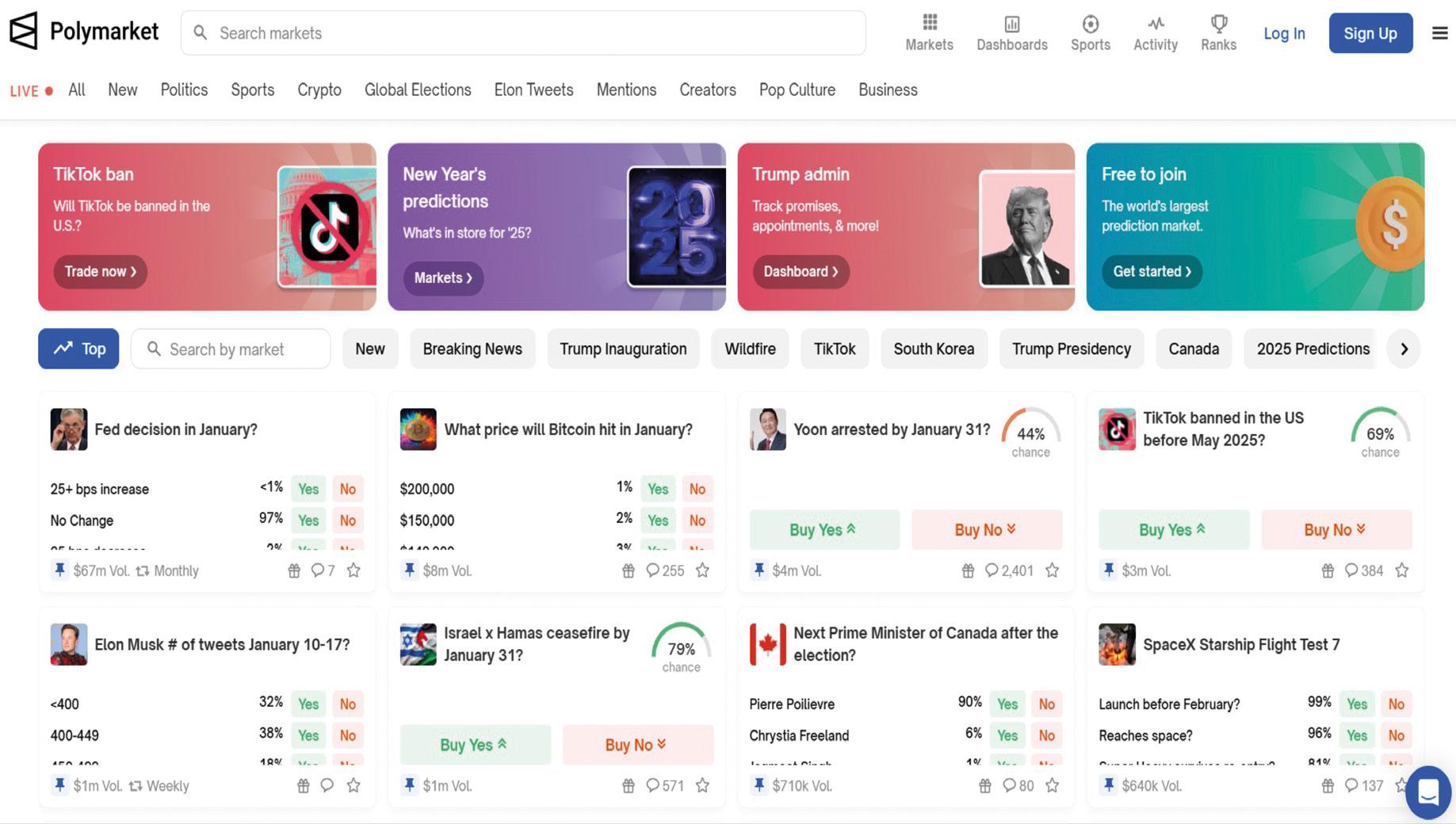
Source: https://polymarket.com/
like staking and liquidity provision.
• Creator Bid: Focused on creator economies, this platform uses DeFi agents to optimize earnings and manage creator assets efficiently.
Why is this a massive opportunity?
DeFi is exciting but time consuming.
DeFi agents level the playing field, making it easier for anyone to access the benefits of decentralized finance without spending hours glued to market charts.
They’re smarter, faster, and take the hassle out of managing your money.
Prediction Markets: Betting on What Happens Next
Imagine being able to harness the collective wisdom of a crowd to predict the future. That’s what prediction markets do. They’re like a stock market, but instead of trading shares in companies, you’re trading based on the outcomes of events.
What are prediction markets?
Prediction markets let participants bet on everything from election results to sports games, or even whether a new movie will flop at the box office. Each market operates like a decentralized betting platform, where people stake cryptocurrency on their predictions.
The odds? Determined by the crowd’s collective belief.
Some key players?
• Polymarket: A platform where users can trade on real-world events, like political outcomes or economic trends.
Why does this matter?
Prediction markets are more than just gambling—they’re tools for gathering insights.
Studies have shown that they can outperform traditional polls or expert opinions, thanks to the power of crowd intelligence. For businesses, policymakers, or even curious individuals, they provide a unique way to gauge public sentiment or anticipate trends.
And here’s the kicker: they also bring transparency. By running on blockchain, these markets ensure that outcomes are tamper-proof and participants can verify the fairness of the process. It’s a fascinating blend of psychology, finance, and technology.
Final Thoughts
Blockchain and Web3 have come a long way from their early days of experimentation.
What started as an ambitious idea with Bitcoin has grown into a transfor-

mative ecosystem.
Over time, new narratives have captured imaginations and pushed boundaries. These weren’t just trends— they were signals of a system evolving, refining itself with each iteration.
Now, in 2025, the conversation has shifted.
It’s less about grand promises and more about delivering real impact.
We’re seeing a real connection between blockchain and everyday life.
The newest batch of narratives are a different breed.
These are the types of projects that offer access, simplification, and fresh ways to tap into collective insight.
It’s not about reinventing the wheel; it’s about making it turn more efficiently.
Blockchain is shedding its reputation as a niche technology. It’s finding its way into the hands of individuals, communities, and businesses that never considered it before.
The future isn’t just being built—it’s being shared.
About
Multi-disciplinary growth expert with 16+ years of experience across various sectors including ai, blockchain, and Saas.
In 2024, Google announced its groundbreaking quantum processor, Willow. Hartmut Neven, Founder and Lead at Google Quantum AI, described its performance as ‘astonishing.’ It completed a calculation in under five minutes that would take the fastest supercomputer an incomprehensible 10 septillion years. This staggering achievement underscores the accelerating reality of quantum computing and its imminent impact.
By Dave Wallace
Quantum computing isn’t just another step in computational evolution—it’s a seismic shift. With the ability to process information in entirely new ways, quantum computers promise to solve problems considered insurmountable by today’s classical systems. With their reliance on data, security, and optimisation, financial services stand to gain immensely and face significant disruption.
This article examines the opportunities and threats posed by quantum computing, drawing on real-world examples from Mastercard, HSBC, and Moody’s to outline defensive and offensive strategies for financial institutions.
At its core, quantum computing leverages principles of quantum mechanics, such as superposition and entanglement. Unlike traditional binary bits, quantum bits (qubits) can exist in multiple states simultaneously, enabling exponential increases in computational power.
Managing Director of AI and Quantum Computing at Moody’s, Sergio Gago,
offers a compelling metaphor: “Imagine the globe is a computer. Binary computers would only be able to use the North and South Poles. Quantum computers would be able to use any point on the globe.” This analogy illustrates the sheer scale and flexibility quantum computing brings to problem-solving. Just as a globe provides infinite points for exploration, quantum computing can explore multiple paths and solutions simultaneously, offering immense potential for tackling complex problems far beyond the reach of classical systems. However, this power has significant implications—not just for innovation but also for cybersecurity and data integrity.
As quantum computing evolves, its potential to address some of the most pressing challenges in financial services becomes increasingly apparent. From risk management to customer personalisation, the applications span critical functions that drive industry efficiency, security, and innovation. Quantum computing has the potential to revolutionise several key areas in financial services. Below are some of the most impactful use cases:
1. Portfolio Optimisation: Quantum algorithms can process vast datasets to identify optimal asset allocations, balancing risk and return far more efficiently than classical systems.
2. Fraud Detection: Quantum-powered machine learning models can detect patterns and anomalies in real time across immense datasets, enhancing the accuracy and speed of fraud detection systems.
3. Risk Management: Financial institutions can leverage quantum simulations to predict market behaviour, improve stress testing, and optimise hedging strategies.
4. Cryptography and Cybersecurity: Quantum-safe encryption algorithms will be essential to safeguarding financial transactions against future quantum threats.
5. Pricing and Valuation of Derivatives: Quantum models can simulate market scenarios at scale, enabling more precise pricing and reducing exposure to market volatility.
6. High-Frequency Trading: Quantum systems can process and predict market trends faster than existing

high-frequency trading algorithms, offering a competitive edge.
7. Customer Personalisation: Quantum analytics can uncover deep behavioural patterns, allowing hyper-personalised financial services and loyalty programmes.
These high-level use cases highlight quantum computing’s transformative potential across the financial services industry.
Defensive Strategies: Preparing for Q-Day “Q-Day” refers to the point when quantum computers become powerful enough to break current cryptographic standards, such as RSA. For Steve Flinter, Distinguished Engineer at Mastercard, Q-Day isn’t a question of “if” but “when.” While experts predict it might still be a decade away, the time for preparation is now.

At Mastercard, preparation centres around crypto agility. This means building systems capable of adapting swiftly to new cryptographic standards without costly overhauls. Flinter emphasises the importance of a crypto inventory—a detailed map of where and how encryption is used across the organisation. This inventory allows Mastercard to prioritise critical systems and implement quantum-safe algorithms systematically.
Flinter also highlights the crucial role of standards bodies like NIST and the US National Institute of Standards and Technology in setting global cryptographic standards. NIST’s work
ensures that cryptographic protocols are robust, secure, and universally adopted across industries. Their ongoing
Dave Wallace is a digital transformation expert with over 25 years in financial services. As co-founder of HeathWallace, he led global initiatives to enhance customer experiences in banking and insurance. A recognized thought leader, Dave shares insights on fintech, digital innovation, and customer engagement.
efforts in post-quantum cryptography are vital for creating algorithms that can withstand the power of quantum computers. Companies like Mastercard are actively monitoring these developments and adopting emerging quantum-safe algorithms to future-proof their systems.
While defensive preparation is crucial, the real excitement lies in quantum’s offensive applications—where it can drive tangible business outcomes.
At HSBC, quantum computing is being explored in collaboration with Quan-
tinuum. HSBC is leveraging quantum applications in cybersecurity, fraud detection, and natural language processing. They are also trialling quantum-secure technology for distributing tokenised physical gold, ensuring the integrity and security of critical financial assets in a quantum-enabled future. These initiatives showcase HSBC’s proactive approach to embedding quantum computing into its operations for improved resilience and efficiency. Mastercard is also looking closely at proactive strategies, including:
1. Fraud Detection: With billions of transactions processed annually, Mastercard relies on machine learning to detect fraudulent activity. However, the sheer volume of data can make identifying predictive signals challenging. Quantum algorithms excel at optimisation problems and are being explored to improve fraud model efficiency, accuracy, and scalability.
2. Loyalty Programmes: Quantum computing can analyse vast datasets to identify intricate behavioural patterns, enabling hyper-personalised rewards programmes. Mastercard is leveraging this capability to deliver targeted offers, enhancing customer satisfaction and merchant engagement.
3. Risk Management: Quantum simulations offer deeper insights into complex market dynamics, allowing financial institutions to price derivatives more precisely and stress-test portfolios more accurately.
Conclusion: The Time to Act is Now. Quantum computing represents both a looming threat and an unparalleled opportunity for financial services.
Institutions must adopt a dual strategy: fortifying their systems against future threats while actively exploring quantum’s offensive capabilities. With experts predicting ‘Q-Day’ could arrive within the next decade, the urgency to act cannot be overstated. Mastercard’s approach provides a valuable model, balancing immediate preparation with long-term innovation.
The message is clear: prepare, experiment, and stay agile. The quantum era isn’t coming—it’s already here.
In software development, there’s a term called “spaghetti code.” It means messy code that lacks structure and looks more like a bowl of spaghetti rather than an ordered system.
By R. Paulo Delgado
Modern payment solutions can suffer the same fate. The system might look simple from the merchant’s perspective: They receive a POS terminal, sign some forms, and are somewhat satisfied that they can now accept credit card payments.
However, what merchants don’t know about is the myriad services and components that payment companies must integrate on the backend to furnish a single solution. Even then, the merchant might still need to pay multiple invoices, or the contrived solution can be so complex that the PSP struggles to add features to it.
The complexities of modern payment solutions
The complexities of building a modern payment solution begin with needing a merchant acquirer, a bank licensed to accept payments from credit cards such as VISA and Mastercard. Not all acquirers support all cards, some acquirers have better rates than others, and different geographic zones might require different acquirers. That’s where the spaghetti solution starts.
The merchant also needs a payment gateway—a component that does the actual technical processing of payments for different wallets and schemes, such as Google Pay, Apple Pay, or the hun-
We can tailor everything in-house. Many companies still work with multiple connections and services—one to the acquirer, another to 3D secure, a third to MobilePay, and so on. We offer a single API to all of these.
dreds of local wallets used globally.
Local wallets are crucial for any company wanting to serve different markets.
For example, in Denmark, almost 75% of the population was using the local MobilePay wallet by 2022 because it offered instant payments when no one else did.
In Poland, 70% of ecommerce payments are made with the local BLIK scheme. Norway’s local scheme, Vips, accounted for 56% of online payments in 2021.
“Behind those wallets sit credit cards, so it’s not even enough to integrate
directly with the wallet. You still need an acquirer to handle the transaction,” says Ruben Nielsen, Shift4’s Vice President of Sales and Business Development in the Nordics.
The acquirer and processor are almost always separate entities. It gets even more complicated: Payments above a certain threshold require 3D secure authentication, a high-end authentication payments product that many third parties provide as a standalone.
• Processing payments requires token support, where a verified token is exchanged between parties instead of the credit card number. Token support is another high-end product that specialized token service providers sell on its own. Cards expire, and an account updating service is required to ensure that users don’t have to re-enter their card details every time they receive a new card—another high-end product often sold as a standalone.
To offer a single payment solution, a PSP/PF must negotiate contracts with each of these service providers, and then write code specific to each one’s API. The result is a complex solution with multiple third-party interdependencies. By now, you might be thinking that



no new players can compete with existing ones in this space because of all the complexities. And you’d be right.
Assuming a new player did manage to get the partnerships and tools in place, maintaining this behemoth can be a technical nightmare.
Shift4 offers one integration—a single API—for global payments support
Founded by Jared Isaacmen at the age of 16 in his childhood home’s basement, Shift4 has grown into a $7.4-billion company with over 2,000 employees. Isaacmen began the company after noticing the inefficiencies of the payment processing firm he was working for at the time. In response, he decided to build a competing product.
This hunt for efficiency has informed every aspect of Shift4’s products, leading to the suite it has today: One that provides payment companies with full ownership of every aspect of the payment cycle from beginning to end.
“Shift4’s unique proposition is that we’re both an acquirer and a processor,” says Nielsen. “We have our own licenses directly with Visa and MasterCard, and
we don’t rely on any third parties. We also provide our own payment gateway.”
Without an integrated one-stop solution, PSPs and PFs are forced to glue together multiple components, services, suppliers, and partnerships, and then are required to ensure each one continues to work harmoniously despite updates. The delicate balance between components limits innovation and agility—you can’t be agile when tugging on one strand of spaghetti might yank out all the rest.
“We can tailor everything in-house. Many companies still work with multiple connections and services—one to the acquirer, another to 3D secure, a third to MobilePay, and so on. We offer a single API to all of these,” says Nielsen.
Whether customers want to pay with Apple Pay or Poland’s BLIK, Shift4 integrates directly with both. It also reconciles payment data from all formats and all currencies so that customers don’t have to do any additional processing.
Building before trends
Shift4’s technology has often preceded the trends.
For example, interest in embedded finance is growing, says Nielsen, and Shift4 has long been equipped to help companies embed finance products into their apps easily using Shift4’s API.
Another major trend the company invested in early was crypto. In December 2024, Shift4 launched its Pay with Crypto service, allowing customers to pay for items with cryptocurrency at hotels, stadiums, and restaurants.
Not a merchant solution
Shift4’s focus is on the providers, not the merchants. Shift4 is an “invisible partner” that makes all the tech work so that a new PSP or PF can hit the ground running and compete with larger, more established companies.
A recent partnership in the POS space in Denmark has resulted in the first real challenger to established players in decades. The new payment company has now entered Germany and is taking Europe by storm, all of it quietly powered by Shift4 technology.
With Shift4, a PSP/PF has a single point of contact so it can focus on gaining market share through innovation. Companies can piggyback on Shift4’s licenses or bring their own licenses. They can implement only parts of Shift4’s API or all of it.
In total, Shift4 supports 130 local wallets and over 160 currencies.
Space-age quality
A lifelong space aficionado and also an accomplished pilot, CEO and Founder Jared Isaacmen was picked by President-Elect Donald Trump last year to head NASA.
“A lot of synergies exist between space tech and payments. We’re incredibly proud at Shift4 of Isaacmen’s achievement,” says Nielsen.
In September last year, Isaacmen was part of the first-ever all-civilian spacewalk, spending 10 minutes floating in the vacuum of space. In 2021, he was commander of an all-civilian mission to reach orbit. Isaacmen also set a world record in 2009 for the fastest-ever flight around the world in a light jet.
Great tech lives on regardless of who leads it. Shift4’s stock prices continue to rise steadily after the announcement of Isaacmen’s exit, following a three-year-long upward trend that has shares up at 3X what they were in 2021.
By IDEMIA Secure Transactions
The seamless fusion of in-store and online payments
Traditionally, in-store and online payments were considered separate, each with its own set of processes and technologies. However, the distinction between these two worlds is becoming increasingly blurred. Shoppers expect the same level of convenience whether they are paying in-store or online.
Retailers are adopting unified payment platforms that allow customers to seamlessly transition from shopping in a physical store to completing their purchase online, and vice versa. Notably, by 2030, these two payment experiences will blend seamlessly.
As of today, bridging physical and digital means of payments has already taken place with wallet solutions offered by both Big Tech Wallets (e.g. ApplePay, Google Pay and Samsung Pay), and Domestic Wallets (such as MobilePay and Vipps) running on card rails, i.e., VISA, Mastercard, Domestic Card Scheme (Dankort in Denmark and BankAxept in Norway), or Account to Account (MobilePay in Denmark and Swish in Sweden). In other words, we have by long embarked on the Phygital experience, arising from online-to-offline strategies.
What are Hybrid Payments?
At IDEMIA Secure Transactions (IST), hybrid payments are facilitated by tokenizing a unique end-user asset, such as a payment card, bank account, or card reference. This tokenization allows payments to be processed both at the point of sale (POS) and within apps, using alternative payment methods like Account-to-Account transfers, Account Based Ticketing, or Central Bank Digital Currencies. Leveraging EMV technologies, hybrid payments integrate the global acceptance of traditional payment cards with these alternative methods, ensuring a seamless payment experience for the end-user. In other words, we support payments networks in ensuring the continued global ability to pay by expanding their payment acceptance across existing rails - supporting both worlds, the digital savvy and the digital conservative. Users will receive a hidden payment token on their mobile phones, enabling them to make contactless, e-commerce, or in-app payments through standard EMV card rail. For hybrid payments, the alternative network must support card issuing, tokenization, and connect with

Acquirers, either directly or through a partner’s network infrastructure.
Market trends fueling the shift Digital Payments have soared becoming the second preferred method of payment1. They are led today by Big Tech wallets such as Apple Pay, Google Pay... However, in the Nordics, digital domestic mobile wallets (MobilePay, Swish, Vipps) have gained enormous traction with an adoption rate of 85%2. Thanks to their popularity, mobile wallets have contributed to a seamless introduction of A2A payments in the Nordics. Additionally, a study conducted by VISA and IPSOS in 2022 shows the most important features desired by mobile wallet users in Europe such as: paying in store (63%), Peer-to-Peer payments (61%), paying abroad (59%) and bill splitting (49%). Various ways of paying in-store have been introduced in the Nordics with Domestic Digital Mobile Wallets. There has been a significant investment in alternative acceptance rails in the Nordic payment landscape. Some of the key learnings showed that Nordic consumers are early adopters of fast and


familiar payment methods that seamlessly integrate their current user journey.
On July 11, 2024, the EU commission accepted a proposal by Apple to commit to open access to ‘Tap and Go’ technology in Europe. Consequently, third-party wallet providers will get access to the NFC input on iOS devices, without having to use Apple Pay or Apple Wallet. Essentially, all iOS users with an Apple ID registered in the EEA, or traveling temporarily abroad, can use their iPhone for in-store payments through an alternative wallet while preserving the same user journey provided by Apple Pay3
Furthermore, the European Payments Council have together with its member states introduced SEPA Instant Credit transfers and SEPA Request to Pay, enabling instant money transfer through domestic and cross border payment rails.
We are truly at the verge of digital dominance and disruption of traditional payments as we know it. Now is the time to prepare for the battle of
~10,000
~10,000 employees across 50+ countries
2400+
Serving 2400+ customers in 150+ countries
€ 150M
More than €150M invested in R&D in between 2020 and 2023
1900
Serving 1900 Financial Institutions worldwide with physical and digital payments products
customer interface. New and coming digital wallets across Europe, have an opportunity to truly compete on the same acceptance rails as Big Tech and established international schemes, introducing A2A payments. Wallets and issuing banks can capitalize on Open Banking and creating rich ecosystems in a B2B2C approach to enhance their

750+
750+ active patent families
400M+
400M+ token provisioned for different token requestors, including major mobile wallets
brand recognition, providing Merchants with attractive loyalty offers for their customers– this will open doors for many future opportunities allowing for a full market disruption.
For more information on how IDEMIA Secure Transactions can support you, please visit idemia.com or your local sales representative.
In May 2011 I embarked on a decade-long stint in Asia, starting my journey in Singapore. Efficiency and digitization were already deeply embedded in various services - from government to financial sectors. At that time, using cards and electronic payments for everyday transactions was a standard in high-income countries such as Singapore, Hong Kong, South Korea, and Japan.
By Ani Filipova
However, as I travelled across Asia, it quickly became evident that outside these advanced economies, cash remained king. In countries like Indonesia, Vietnam, and the Philippines, cards had limited penetration and were primarily accepted in large malls or high-end hotels. The majority of everyday transactions were still conducted using cash. Fast forward to today, and the transformation is astounding. Asia has made a giant leap into the future of payments, fueled by instant payment systems, mobile wallets, and an exploding e-commerce market. According to data from the Asian Development Bank (ADB) , Asia and the Pacific holds the largest share of the world’s business-to-consumer (B2C) and retail e-commerce market and is expected to account for 61% of the global total by 2025. Countries such as China, India, and Indonesia have become key players in driving this growth. Indeed, the phrase “The Future is Asia” rings truer than ever.
What Drove This Transformation?
1. The Rise of Asia’s Middle Class
The growth of the middle class has been a major driver behind Asia’s payments revolution. In 2015, Asia
accounted for 45% of the global middle class, growing to 54% by 2020. By 2030, it is expected that two-thirds of the world’s middle class will reside in Asia, making it the most significant market for consumer-driven growth. This demographic shift has spurred demand for convenient, secure, and accessible payment solutions.
2. Youthful Demographics
Asia is home to 60% of the world’s youth, making it the most youthful region globally. Countries like India, Indonesia, and the Philippines have a predominantly young population, which is more tech-savvy and comfortable with digital tools. This demographic prefers innovative payment methods, such as mobile wallets and peer-topeer payment systems, over traditional banking solutions, which are often unavailable to them.
3. Technological Advancements and Financial Inclusion
The rapid development of financial technology has brought innovative solutions to previously underserved populations. Many governments across Asia have prioritized financial inclusion by implementing policies and infra-
structure that support cashless payments, making it easier for people to participate in the digital economy. Initiatives like India’s Jan Dhan Yojana have helped bring millions into the banking system, enabling them to adopt digital payment methods.
4. COVID-19: An Unintentional Accelerator
The COVID-19 pandemic further accelerated the adoption of digital payments. Lockdowns and social distancing measures discouraged cash transactions, driving people to adopt contactless payments, mobile wallets, and e-commerce solutions. According to a 2023 McKinsey report, digital payment volumes in Asia surged by 25-30% annually during the pandemic years, creating a permanent shift in consumer behavior.
Key Payment Methods Driving Asia’s Revolution
1. Instant Payment Systems
Since 2016, almost every country in Asia has introduced its own instant payment system: India: Unified Payments Interface (UPI) processes over 10 billion transactions monthly as of 2024, with transaction values


exceeding $200 billion per month.
• Thailand: PromptPay has over 73 million users, making it one of the most successful government-led payment initiatives globally.
Singapore: PayNow have enabled seamless peer-to-peer and business-to-business payments, often completed in under 3 seconds.
• Hong Kong: The Faster Payment System (FPS) integrates traditional banking with e-wallets like Alipay and WeChat Pay, allowing QRbased and mobile number-based transactions.
These systems enable real-time fund transfers using phone numbers, email addresses, or QR codes, making them faster, more cost-effective, and accessible compared to traditional banking methods.
I have been an international banking executive for over 25 years, working in Bucharest, London, Singapore, and Hong Kong. I spent 21 years with Citibank across Europe, the Middle East, Africa, and Asia. From 2015 to 2021, I was Asia Regional COO for Citibank Treasury and Trade Solutions, a $2Bn business spanning 16 countries, including India and China.
Middle class = household with incomes between $11-$110 per person/day (PPP) in 2011
Source: Brookings Institution
2. Mobile Wallets
Mobile wallets have become a dominant payment method in Asia, thanks to widespread smartphone penetration and affordable internet. In 2024, the number of mobile wallet users in Asia surpassed 2 billion, with the following key players driving adoption:
• China: Alipay and WeChat Pay dominate the Chinese digital payments landscape, collectively accounting for over 90% of the market. As of June 2024, around 969 million people in China were using mobile payments, showcasing the immense reach and influence of these platforms.
India: The Unified Payments Interface (UPI) has revolutionized
digital payments in India, with platforms like PhonePe and Google Pay leading the charge. In December 2024, PhonePe processed nearly 8 billion transactions, while Google Pay followed closely behind. Together, these platforms accounted for approximately 85% of UPI transactions.
Southeast Asia: The region has seen significant growth in mobile wallet usage, with GrabPay, GoPay, and ShopeePay emerging as key players. These platforms are integrated into various services like ride-hailing and food delivery, making them essential for everyday transactions.
QR code-based payments have democratized access to cashless systems. Unlike NFC-based payments that require expensive POS devices, QR codes can be printed and scanned using basic smartphones. Countries like China, Indonesia, and Vietnam have seen massive adoption of QR code payments in small businesses and informal markets.
With the rise of global trade and travel, cross-border payments have become more efficient. ASEAN countries have implemented systems like the Regional Payment Connectivity Initiative, which allows interoperable QR payments across borders. For example, a tourist from Singapore can pay using PayNow in Thailand through PromptPay. This specific linkage between Singapore’s PayNow and Thailand’s PromptPay was launched in April 2021, marking the world’s first linkage of real-time retail payment systems.
Asia’s digital payment revolution is a testament to the region’s adaptability, innovation, and drive for financial inclusion. With a rising middle class, a youthful population, and cutting-edge technology, Asia has positioned itself as the global leader in payments. While challenges remain, the progress made over the past decade offers a blueprint for the rest of the world.


In 1989, the Baltic Way united Estonia, Latvia, and Lithuania in a historic display of solidarity. Over two million people joined hands across the three countries, forming a 600-kilometer-long human chain to demand independence from Soviet rule peacefully. This act of collective determination became a global symbol of resilience, collaboration, and shared purpose. Decades later, the same spirit drives the transformation of the Baltics into a thriving Fintech powerhouse.
By Lina Žemaitytė-Kirkman, Head of ROCKIT Vilnius
Estonia, Latvia, and Lithuania have turned their post-independence economic challenges into opportunities, embracing innovation and technology to become leaders in the digital financial sector. With over 500 Fintech companies operating across the region, the Baltics are a magnet for global startups and investors. Lithuania has emerged as a leader, issuing 147 Electronic Money Institution (EMI) licenses, while Estonia’s e-residency program has drawn thousands of digital entrepreneurs. Latvia, meanwhile, is carving out a niche as a key player in data-driven financial solutions, further strengthening the Baltics’ appeal as a Fintech hub.
The Power of Trio: What Makes the Baltics Unique
Each of the three Baltic nations brings its strengths to the shared Fintech ecosystem. Lithuania has positioned itself as a gateway to the European market, offering an attractive regulatory framework and streamlined licensing processes. The Bank of Lithuania has played a central role, in creating regulatory sandboxes that allow startups to test innovative financial products in a controlled environment. This supportive landscape has drawn international companies such as TransferGo and Paysera, reinforcing Lithuania’s reputation as a Fintech hotspot.
Latvia, though smaller in scale, has steadily built its profile as a hub for data analytics and banking technologies. With a growing pool of skilled IT professionals and government policies designed to encourage innovation, Latvia has developed a thriving startup ecosystem. Its focus on data-driven solutions and advanced analytics makes it an appealing destination for Fintech firms developing AI-powered tools and other digital solutions.
Estonia, a pioneer in digital governance, has earned global recognition for its blockchain technology and digital identity solutions. Its groundbreaking e-residency program has attracted entrepreneurs from around the world, providing them with the tools to establish and manage companies remotely. Combined with blockchain-friendly regulations and a culture of innovation, Estonia has created an ecosystem that fosters growth and experimentation.
The Baltic States as a Global Fintech Powerhouse What sets the Baltics apart is not only their successes but their collective effort to collaborate rather than compete. This unified approach has attracted major international firms, including Revolut, SumUp, and Railsr, all of which have established operations in the region. The Baltics also perform strongly in global rankings: Estonia, Lithuania, and Latvia
rank 30th, 40th, and 41st, respectively, in the Global Competitiveness Index, while Lithuania stands out at 11th in the World Bank Doing Business Index.
The region also excels in the Fintech Environment Index, which evaluates digital adoption, regulatory clarity, and access to talent. Estonia and Lithuania consistently rank among the best, highlighting their ability to attract international investment and nurture innovative Fintech solutions.
Face-to-Face with the Baltics ROCKIT, a Lithuanian Fintech hub, has played a vital role in strengthening the ecosystem by fostering stakeholder collaboration. Over the past five years, Lithuania’s Fintech community has matured, with partnerships and knowledge-sharing emerging as defining features. This collaborative spirit extends across the region, where Estonia, Latvia, and Lithuania complement one another’s unique capabilities to create a unified Fintech hub.

About
Lina ŽemaitytėKirkman Head of ROCKIT Vilnius
Lina Žemaitytė-Kirkman, Head of ROCKIT Vilnius, is a driving force in the Baltic Fintech ecosystem, known for fostering collaboration among startups, investors, and policymakers.
Recognizing the value of showcasing our collective strength, we together with our partners in other Baltic states are launching Baltic Fintech Days, an annual event that will rotate between Vilnius, Riga, and Tallinn. The event aims to highlight regional achievements, foster partnerships, and connect local startups with international investors and innovators. This year’s inaugural event will take place in Vilnius, offering attendees a chance to experience the region’s dynamic Fintech landscape firsthand.
The Baltic region has firmly established itself as a rising star in the global Fintech ecosystem, defined by innovation, collaboration, and forward-thinking regulatory practices. With initiatives like Baltic Fintech Days amplifying the region’s voice on the international stage, the Baltics are well-positioned to shape the future of financial technology. By uniting their strengths, Estonia, Latvia, and Lithuania are not only advancing their Fintech ambitions but also solidifying the Baltics as a world-class hub for innovation and investment.
By Abda Rothman
“If AI Can Do Everything, What Will Humans Do?”
Someone asked me the other day—if AI can do everything, then what will humans do? The question stayed with me all afternoon. It followed me through emails, meetings, and phone calls. By evening, I was still mulling it over, and somewhere in the quiet hours of the early morning, the answer struck me.
The statements we hear so often about AI—“this sounds like AI wrote it,” “only AI uses those words,” “this phrasing feels mechanical”—tell us something profound. AI, for all its brilliance, lacks humanity. It pushes us to be more real, more genuine, and more meaningful.
It’s funny how technology, which many see as a path to automation and efficiency, is paradoxically pushing humans to dig deeper—to find purpose, clarity, and truth. And from a business perspective, if that’s where your customers are headed—towards authenticity and trust—then businesses must follow. After all, “know your customer” is Business 101.
But here’s the catch: it’s not just about building products, marketing them, and making money. It’s about digging deeper—into your data, frameworks, privacy, and ethics—the things that really matter to your customers and form the foundation of your business.
This is where compliance, often seen as a burden, becomes a guiding force. It’s the structure that helps busi-
nesses connect with their customers in an honest, human-centred way.
The Convergence of Technology, Humanity, and Regulation
There is a convergence happening—a symbiosis—where technology, regulation, and humanity meet. It’s no longer about solving isolated problems; it’s about creating solutions that reflect who we are and what we value.
Take Klarna, for example. The fintech giant didn’t just revolutionise online payments; it built its success on customer-centric simplicity. Klarna knows its customers. It uses data responsibly to predict behaviour, personalize experiences, and offer transparency. Compliance frameworks like GDPR didn’t hold Klarna back—they strengthened its foundation. Customers know Klarna respects their data, and that trust is what keeps them coming back.
This example demonstrates a universal truth: compliance isn’t a threat—it’s an opportunity. It’s the guide that helps businesses connect with customers in meaningful ways, putting
the human at the centre of technology.
Although DORA and the AI Act are still in their early stages of implementation, major consultancy firms have already begun providing guidance on how businesses can align with these frameworks. As these regulations evolve, we look forward to seeing how more companies will integrate these frameworks to build trust, ensure resilience, and use AI responsibly.
A New Perspective: The Role of AI and Compliance as Tools for Humanity
So where does AI fit into this? Think of AI as a superposition—a tool that doesn’t craft just one possibility but combines multiple possibilities. AI can help businesses streamline operations, automate processes, and optimize results, but its real power lies in augmenting human creativity, purpose, and strategy.
Compliance frameworks like GDPR, DORA, and the EU AI Act act as the guardrails—keeping AI honest, transparent, and fair.
GDPR reminds us that data belongs to people, not systems.
DORA demands that systems be


resilient and trustworthy, capable of withstanding crises.
The AI Act ensures fairness and transparency, ensuring that AI supports—not manipulates—humans.
Imagine a fintech tool that not only approves loans but explains why—offering thoughtful insights that help customers improve their finances. Imagine AI systems so transparent and bias-free that customers trust the technology without hesitation. Imagine fintech products so resilient that even during disruptions, customers feel secure knowing their financial systems won’t fail.
Compliance isn’t about ticking boxes; it’s about creating businesses that align with human values. It’s about earning trust, fostering connection, and driving purpose-driven innovation.
If Europe’s fintech industry has shown us anything, it’s that innovation and compliance don’t compete—they complement each other. Regulations like GDPR haven’t stifled innovation— they’ve elevated it. They’ve helped build a foundation of trust between businesses and customers.
Today’s customers don’t just want fast payments and sleek interfaces.
They want businesses that align with their values—companies that prioritize privacy, fairness, and sustainability.
When businesses embrace compliance as a guiding force, they can:
1. Create Privacy-Centric Tools that protect data and empower users.
2. Build Resilient Systems that withstand shocks and disruptions.
3. Develop Ethical AI that augments human life with fairness, transparency, and accountability.
4. Align operations with sustainability goals, creating long-term value for both people and the planet.
With 20 years of experience, I bring a comprehensive perspective of the financial industry. My expertise lies in aligning regulatory frameworks with business objectives, ensuring organisations remain both compliant and competitive in an evolving digital landscape. Passionate about the intersection of technology and financial services, I work to enable businesses to harness innovation while safeguarding trust and sustainability.
Compliance isn’t about ticking boxes; it’s about creating businesses that align with human values.
Abda Rothman Chief Business Risk Manager at Nordea
The Big Question: If AI Can Do Everything, What Will Humans Do?
We will create, connect, and inspire. We’ll look inward to rediscover our humanity and outward to reflect it in the tools we build. Businesses that recognize this shift—and design their strategy, technology, and culture around it—will thrive.
So the next time you sit in a boardroom, brainstorming the next big product or collaborating with your innovation team, ask yourself this:
“How do we put the human at the centre of everything we build—and how can compliance help us get there?”
Because those who answer this question won’t just survive the age of AI—they’ll lead it.
Wealth management has long been seen as the exclusive domain of the ultra-rich. High entry barriers, complex jargon, and prohibitive fees have kept everyday people locked out of opportunities to grow their financial health. But the winds of change are blowing, and technology is rewriting the rules of the game once again removing barriers, and democratizing access to what has previously been reserved only to a few.
By Chris Crespo
The Problem with Traditional Wealth Management
For decades, wealth management was synonymous with exclusivity. Entry required substantial assets, often in the hundreds of thousands, leaving the majority of people excluded. Hightouch services, which involved bespoke advice, tailored portfolios, and constant engagement with advisors, came with significant costs, making them unattainable for most. Adding insult to injury, the language of wealth management has been a fortress of incomprehensible jargon, accessible only to insiders. This has alienated even those who had the means but lacked the financial literacy to navigate the system. Don’t believe me? Grab a copy of the Financial Times and read the Investment section, you’ll see what I mean.
At the same time, financial literacy remains shockingly low. Surveys indicate that only a small fraction of Europeans can confidently answer basic questions about interest rates or inflation. A Eurobarometer survey published in 2023 revealed that only 18% of Europeans posses high level of
financial literacy. Notably only Netherlands, Sweden, Denmark and Slovenia have more than 25% of their populations scoring high in financial literacy tests. In the UK it is estimated that only 20% of the adult population can answer basic questions about savings and investments. Without a basic understanding of finance, many of us feel overwhelmed and intimidated, perpetuating a cycle of inaccessibility.
Technology’s Democratizing Impact
Leave it to technology to fix this. New platforms are breaking down barriers, enabling broader access to investment tools that were once reserved for the privileged few. By leveraging algorithms, user-friendly interfaces, and social features simlar to the ones popularised in social media platforms, like comments, likes, and shares, these innovations are transforming wealth management into an inclusive space. Take platforms like Public.com or eToro, which integrate social features to foster peer-to-peer learning. Users can not only invest but also share strategies, comment on transactions, and
learn from more experienced investors. These platforms demystify investing, making it accessible to people who might have previously been daunted by the complexity of traditional services.
However, democratization doesn’t eliminate the human pitfalls of investing. Cognitive biases remain a significant challenge. Behavioral economists have identified numerous biases that affect decision-making under risk. Three key biases stand out in relation to investing and managing money:
1. Recency Bias: Overvaluing recent events while ignoring historical trends, leading to overinvestment in trending sectors like tech, often at the wrong time.
2. Herd Mentality Bias: Copying others without understanding the rationale, which drives bubbles and crashes by pushing people to buy high and sell low.
3. The IKEA Effect: Overvaluing investments simply because of personal effort or attachment, even when they underperform.


tainty over the weekend, a robo-advisor can provide guidance in real time— something a traditional advisor might not manage until Monday morning.
Estonia allows investment in fractional shares, enabling users to invest in highpriced stocks with smaller amounts of money. Want to buy Class A shares in Berkshire Hathaway, but can’t fork out the $692,904 to buy one share? no problem, start with $200 USD and own a fraction instead. These platforms foster a sense of community and ownership, allowing people to engage with their investments in tangible ways tracking progress and celebrating milestones.
Establishing trust in tech-driven tools requires more than just functionality; it demands clarity and accessibility. Platforms must prioritize intuitive user experiences, transparent communication, and relatable content. People are more likely to trust services that feel tailored to their needs, are easy to navigate, and communicate without unnecessary complexity.
Technology has the potential to make financial growth accessible to all, but the journey requires balancing innovation with responsibility.
Technological solutions are emerging to combat these biases. Platforms like eToro’s copy trading feature allow users to mirror the portfolios of top-performing investors, offering a way to bypass emotional decision-making. Robo-advisors use algorithms to provide unbiased, data-driven recommendations tailored to individual risk preferences. These tools make investing simpler, smarter, and less prone to human error.
Automation and Micro-Investing
Automation is another powerful equalizer. Robo-advisors provide instant advice, removing the delays and costs associated with human advisors. For instance, if market news creates uncer-
Micro-investing platforms like Acorns further lower barriers by rounding up everyday purchases and investing the spare change. With minimal effort, users accumulate investment portfolios over time. Acorns users alone have invested over $15 billion through these micro-transactions, proving that small steps can lead to significant financial growth.
Syndicated and Fractional Ownership
Fractional ownership platforms are another innovation making waves. Companies like Cameo in Sweden allow individuals to invest small amounts in large-scale real estate projects. For as little as €50, users can own a stake in skyscrapers, shopping centers, or housing complexes. Simlarly Lightyear from
While technology has opened doors, it has also created new challenges, particularly with the rise of financial influencers, or “finfluencers.” Social media platforms like TikTok are awash with self-proclaimed advisors and investment gurus, promising unrealistic returns to their enthusiatic novice followers. This trend poses risks to both the credibility of the industry and the financial well-being of consumers. Financial institutions must recognize the cultural shift toward decentralized and democratized information. Younger generations are accustomed to seeking advice from diverse, often informal sources. To remain relevant, traditional institutions need to adapt, meeting audiences where they are and speaking in a language they understand. This doesn’t mean compromising on credibility or trust but rather embracing transparency, simplicity, and relatability.
This shift also means abandoning the “ivory tower” mentality. Financial institutions should embrace authenticity, engage in dialogue, and prove their value through action rather than exclusivity. Trust is built not just on what you offer but on how you offer it.
We stand at a critical moment for wealth management. Technology has the potential to make financial growth accessible to all, but the journey requires balancing innovation with responsibility. Platforms must address biases, improve literacy, and foster trust, all while embracing the cultural shifts that define today’s information landscape.
The financial world has much to learn from this democratization. If they are to capture the interest of previously excluded target groups, wealthtech companies must ensure that the tools it creates serve everyone, not just the few, and in the way they want to be served.

Building a fintech is hard – you need all the help you can get. And yet an enormous untapped resource is, literally, just sitting there. Academic researchers. Every university and business school has them. They are just sitting there and working on, well, academic research.
By David Stolin
They are my tribe, and I love them. They went into academia out of a passion for making sense of the world and sharing their knowledge and discoveries. They’ve spent years, and often decades, on acquiring and perfecting the formidable analytical tools needed to be on the cutting edge of their field. Discovering something we didn’t know before is what gets their juices flowing. Publishing it in a leading academic journal and getting the article cited by their peers is their validation. And if the research makes real-world impact, that’s their nirvana.
As a fintech, you have a simple way
to tap into this supply of world-class brainpower: just talk to them.
A researcher is always on the lookout for cool things to study. Fintech-curious academics – including many of those whose job title, like mine, reads “professor of finance” – are potentially open to spending hundreds of hours working, quite possibly for free, on a topic of vital importance to your fintech, provided they think it is likely to lead to a high-quality academic article. If that’s not a win-win, I don’t know what is.
But what can you offer them to grab their interest?
Much, actually. It may simply be flagging a specific “pain point” that the

academic literature hasn’t spotted yet. It might be collaborating on a controlled experiment (“A/B testing” to you) in order to establish causal relationships rather than mere correlations. It might be providing unique data (suitably anonymized and subject to an NDA) to be analyzed. And once the collaboration gets under way, you may well be stunned at the magnitude of benefits to your fintech.
But don’t take my word for it. I have asked leading researchers at some of the world’s most reputed business schools to share their thoughts on how academics can benefit fintechs. Here are their answers.

AboutDavid Stolin is a professor of finance at TBS Business School in Toulouse, France and co-founder of Ed.movie, Inc. His academic research has been published in such leading outlets as Journal of Finance and Management Science. His work on applying industrialgrade humor to make finance ideas irresistible can be found on www.youtube.com/@ed-movie
The David S. Lobel Professor of Private Equity at Stanford Graduate School of Business, Director of the Venture Capital Initiative and author of the best seller The Venture Mindset
• Academics – finance and economics professors specifically – can help designing efficient / optimal mechanisms. For example, for fintechs in B2C space offering packages to retail customers.
Academics can help utilizing data fintechs assemble and thus making fintechs themselves more known / reputable.
• Academics can help identify market needs based on what research and trends show or suggest ways to introduce another product or business line.

Associate Professor of Strategy and Entrepreneurship, London Business School, and director of ‘Fintech Forward: Strategies for Incumbents and Startups’ course
• Today we celebrate the value of embracing diverse perspectives. Along these lines, I found academic-practitioner conversation to be effective to both parties as it offers a fresh perspective. Specifically…
• An academic perspective can help with ‘pattern recognition’ and ‘seeing the forest for the trees’ – identifying common success drivers across different geographies or settings. Relatedly, there is a level of methodological rigor and capability that can enhance solution development through cutting-edge research and/or data analysis.
Professor of Financial Technology and Data Analytics at Rotterdam School of Management and Academic Director Fintech at the Erasmus Center for Data Analytics
• From my role as an academic advisor to a start-up as well as a coach for the students in my FinTech Course that I run as an incubator, I see that a high-level overview is often missing and the entrepreneurs tend to focus too much on details. We as academics are well-trained in that.
I notice that I can often summarize a business pitch in two or three sentences that better reflect the project and value added than what the entrepreneurs come up with. I also notice that the choices many FinTech entrepreneurs make for their technologies are often not optimal given the problem they are faced with. About half the blockchain/token projects I get to see can at least in part be more efficiently implemented on a centralized infrastructure. A lot of projects would benefit more from a dashboard than AI/ML usage, etc. What it typically comes down to is for a business to recognize the frictions they are alleviating. That is, start from a frictionless world, see how frictions reduce value, and then see to which extent they can resolve these frictions. This immediately gives a good estimate of the value that is unlocked.

But, I hear you say, show me concrete cases where academic research in finance actually led to the creation of successful businesses. Well, I was asked to write an article, not a book (but if you do want a book, the classic “Capital Ideas” is a great start). The multi-trillion-dollar index fund industry, for one, grew directly out of

L.E. Simmons Chaired Professor of Business Administration at Harvard Business School and creator of the HarvardX Fintech course
The most compelling reason that fintechs and aspiring fintechs should keep one ear squarely pointed at academia is the white space nature of the opportunity they have in front of them. If you were starting a new hospital today that aimed to deliver care exactly like every other hospital, you simply need to look at what other hospitals are doing, and essentially follow their model - which by construction must comply with the latest laws, patient guidelines, practice of care, etc. That is traditional banking. However, fintechs have the precise opportunity to come in and disrupt and upend traditional finance, creating completely new products, services, and ways of doing business. To this end, to the extent you wanted to create an entirely new system, it makes complete sense that the place you would want to look is first principles. You would start at the very beginning of what a financial system should be doing and could be doing, and build from that point to create entirely new solutions. This is exactly where academia, and academics, provide the gold standard of knowledge. And this is the precise reason that even very experienced financial executives and regulators come back to my course to learn from that first principles approach.
academic research. Or take Cornell University finance professor Roni Michaeli’s work on the performance of stock market analysts. They were the inspiration for the analyst ranking platform created by the fintech TipRanks – which Prof. Michaeli joined as an advisor and investor. TipRanks later enhanced their offering by drawing on
insights from a study co-authored by Prof. Cohen (yes, the same one who just pitched his fintech course to you) examining which corporate insider stock transactions are particularly profitable. “Keeping one ear squarely pointed at academia” has paid off for TipRanks: a few months ago, a 40% stake in it was sold for $200 million.
So how do you unearth these academics who are open to discussing with fintechs? Fortunately, we are doing it for you. Future Finance Fest, to be held in Vilnius, Lithuania on 25-27 August is optimized for conversations and collaborations between fintechs and academics. Visit www.fufifest.org – and see you in Vilnius!
The Nordics are a hotspot for fintech innovation, with startups reshaping banking, payments, and investments. Driven by tech, sustainability, trust, and inclusion, these rising companies are setting new standards in finance. Here’s a spotlight on some of the startups making waves in the industry right now.
It’s all about time, relationships and money. &money develops digital products that transform business and operating models by streamlining processes, enhancing the customer experience and optimizing results.
Founded in 2017, Taktikal is on a mission to make trusted digital journeys accessible for organizations of all sizes. As the usage and need for PDFs and printing declines, the demand for flexible forms and document driven workflows with secure authentication is on the rise. The world is evolving quickly, and we believe every organization deserves access to seamless, reliable digital experiences. As trust is a cornerstone of most businesses, we are here to help organizations deliver trusted and secure digital journeys.



Huddlestock helps companies of all shapes and sizes launch or transform investment experiences faster than ever before. Our Investment-as-a-Service solution provides companies with all the modern investment infrastructure they need, from white-label apps and trading APIs to investment operations software and custody services. Huddlestock is regulated by the financial supervisory authorities of Norway and Germany.

Decisimo lets lenders update credit policies in minutes without code. Risk teams set rules, build decision flows, and connect to credit bureau data without needing developers. Test changes before deployment. Enforce explainable, traceable, and auditable decisions. SOC 2 and ISO 27001 certified.

CyberUpgrade is an ICT security and compliance automation platform that turns paper compliance into real-world business resilience. Built in Lithuania by experienced CISOs and fintech pioneers, it provides the capabilities of a full cybersecurity and compliance department at the cost of a subscription. By streamlining third-party management, compliance, risk assessment, and audits—and involving every employee in fostering cybersecurity awareness—CyberUpgrade empowers businesses to build resilience and achieve Fortune 500-level protection.
Paytrim revolutionizes card transactions with an innovative, secure, and scalable payment platform. Our cloud-powered solution makes payment operations smoother, offering instant onboarding, quick settlements, and strong security for seamless transactions. With advanced automation and API capabilities, Paytrim provides valuable insights and flexibility, helping businesses thrive in today’s fast-paced market. By leveraging our transaction data, we turn every transaction into a chance for growth and consumer insights. Paytrim’s full-stack payment platform boosts efficiency through automation and real-time data insights. Our embedded solutions integrate effortlessly into your existing systems, providing a unified user experience from start to finish. Discover the future of payments with Paytrim!
